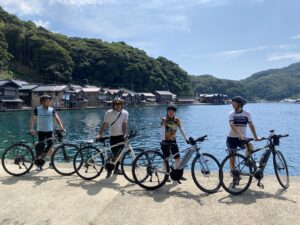Hello, my name is Mazda and I'm a tour guide living in Kyoto.
Recently, Kyoto has become overcrowded with tourists from all over the world. The quiet and beautiful spots are now being ruined by the stress of the crowds. As a local, I would like to introduce some recommended and not recommended spots for Kyoto in 2025.
Recommended #1 : Bamboo grove in Arashiyama in early morning or winter
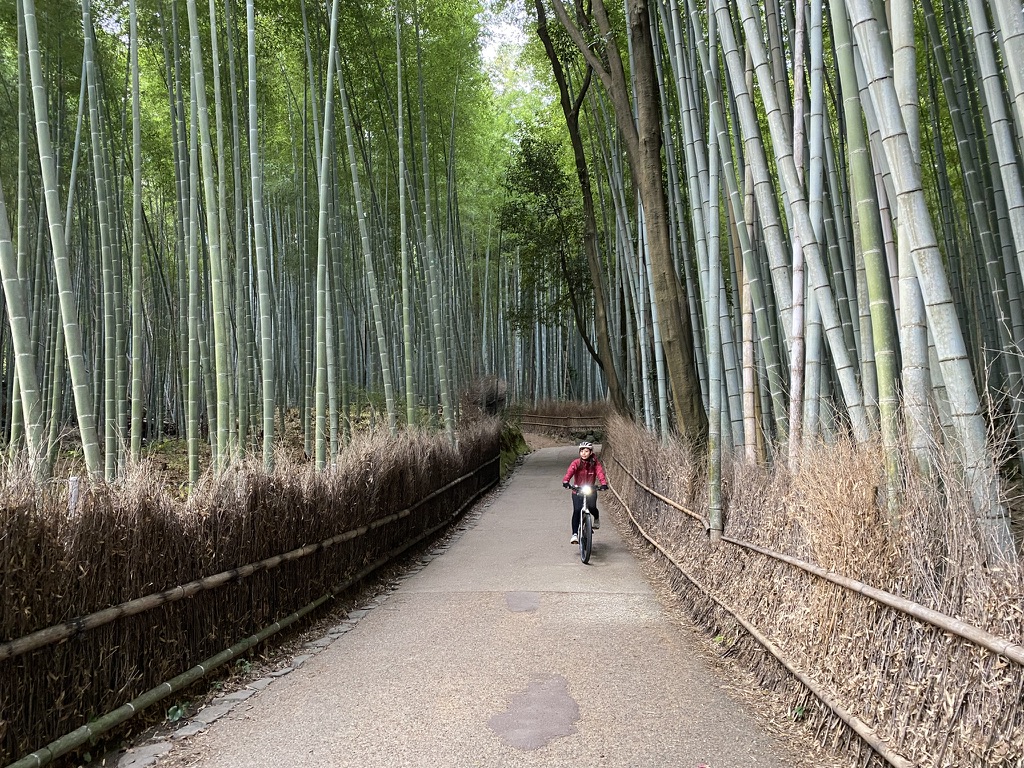
Arashiyama is an ancient resort area and the area where the imperial tombs are located. It also flourished as a trading hub and a provisional government during the war. While the center of Kyoto city has been developed into a modern area, the historical scenery and nature have been preserved, and you can enjoy the beauty of Japan. It is the most recommended area in Kyoto.
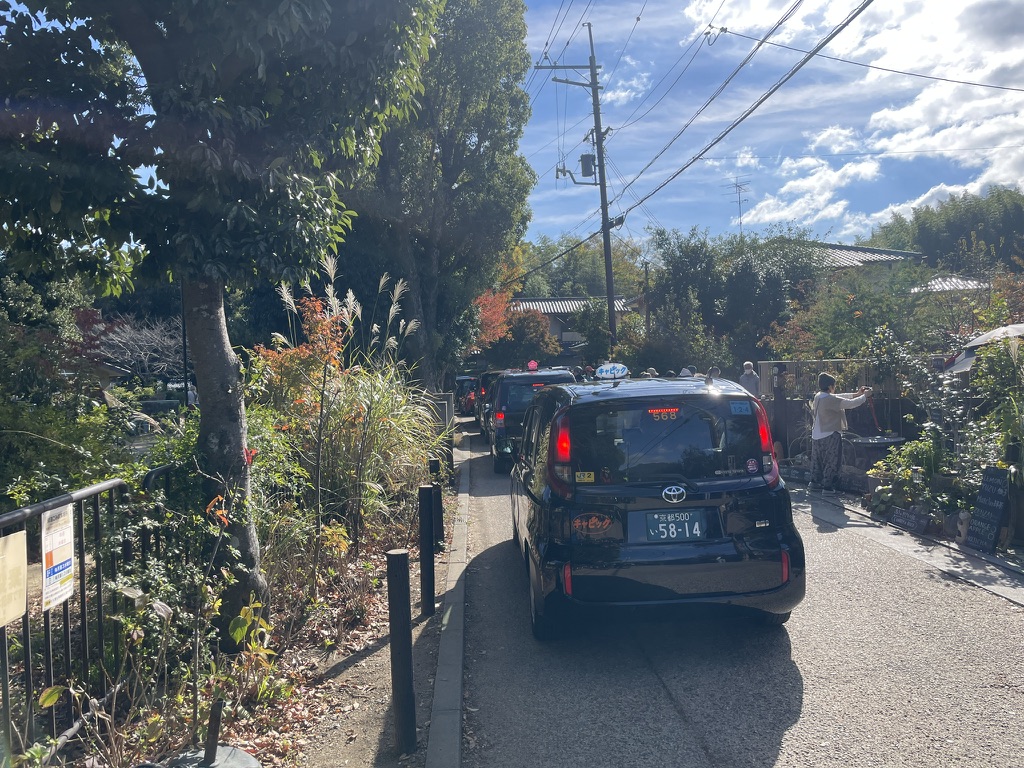
However, daytime is hell. The hordes of people and taxis swarm in, completely destroying the mystical atmosphere of the bamboo grove.
If you join our guided tour, we can show you hidden spots that are difficult for most people to reach, but if you're going without a guide, we recommend going early in the morning or in winter.
Live Camera
By the way, there is a live camera available, so it is a good idea to check the congestion situation in advance using this.
When entering the bamboo forest, it is recommended to enter from the north side, farthest from the station. The further in, the more beautiful it is and the fewer people there are.
Recommended #2 : Adashino Nenbutsu-ji in Sagano
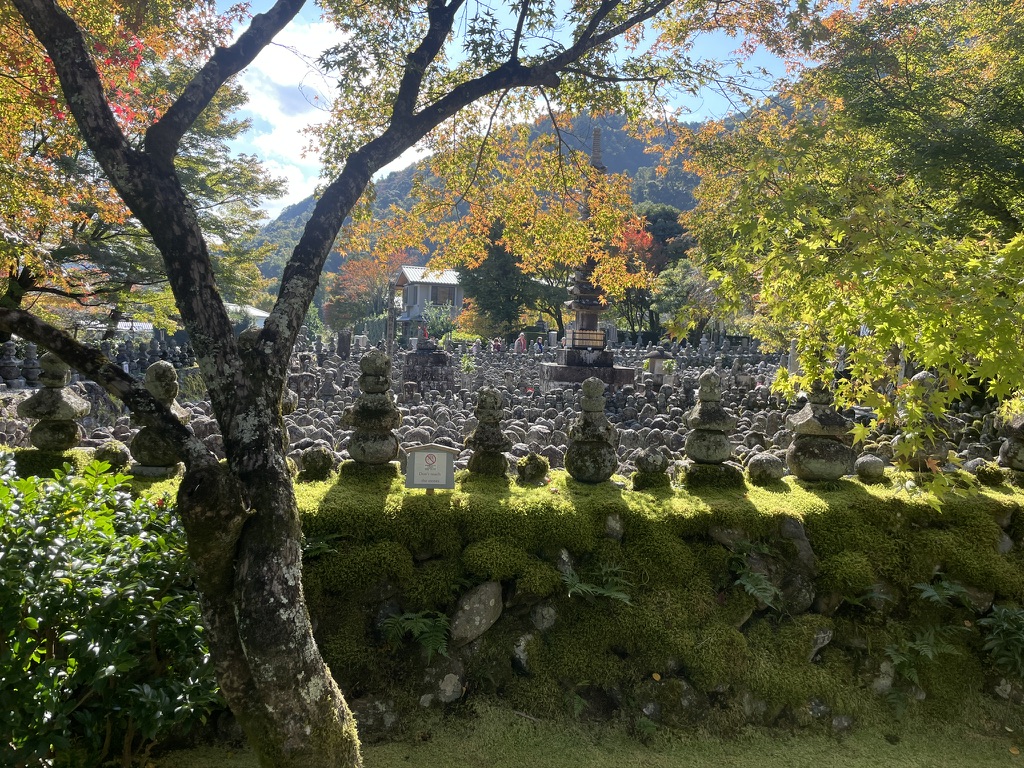
This temple is famous for its over 8,000 stone statues. These were collected and enshrined about 150 years ago from abandoned graves scattered around the area. They represent the Buddhist underworld, and although they are a little scary, the temple has a very mystical and gentle atmosphere. There is also a beautiful bamboo forest within the grounds, and it is not too crowded, so I highly recommend it.
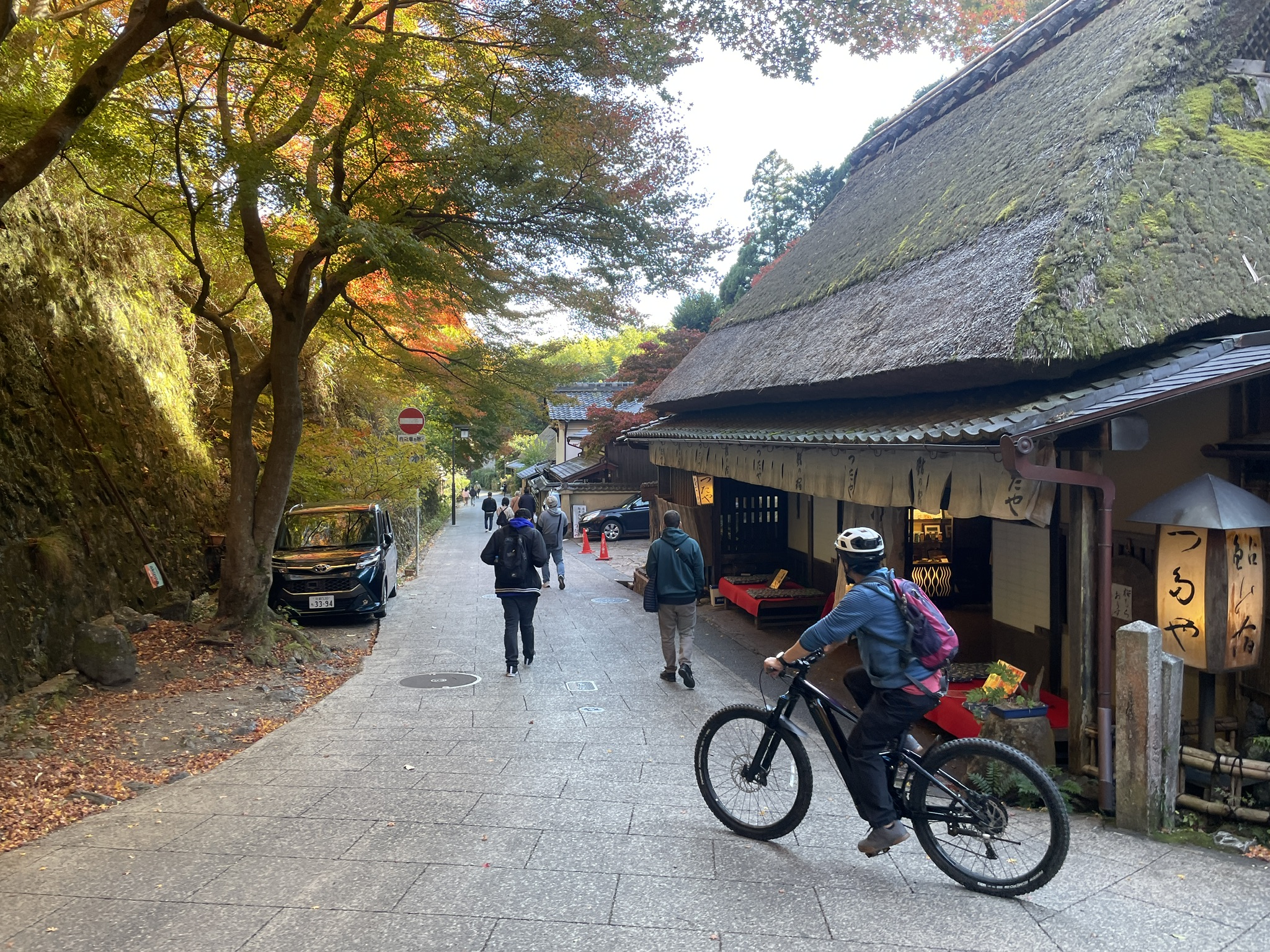
The surrounding area has been well preserved and is a very interesting area, which was a highlight of our cycling tour.
Adashino Nenbutsu-ji Temple is part of the Arashiyama area, in the northern Sagano area, and is a 20 minute walk or 5 minute e-bike ride from the bamboo forest.
Not recommended : Sightseeing only around Arashiyama Station
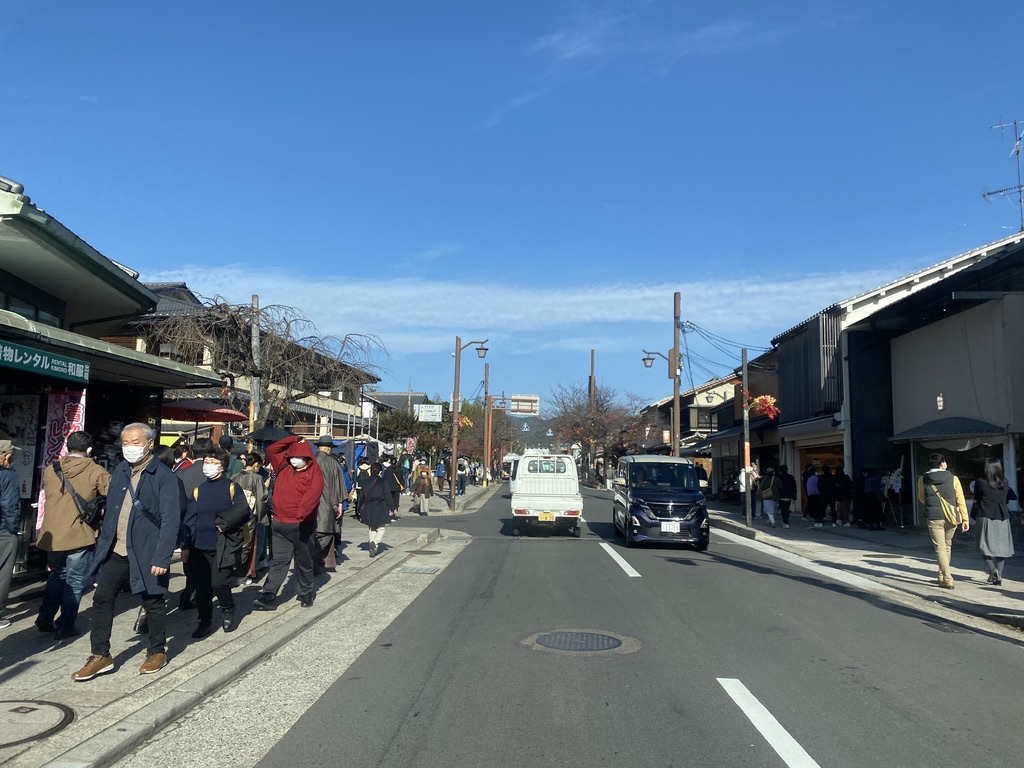
The worst option when you come to Arashiyama is to walk only through the crowded area in front of the station and go home exhausted. And that is what happens to 99% of people. I often hear sad comments like "Arashiyama was just crowded and tiring."
If you rent our E-Bike and follow our original map or join a guided tour, this will never happen, but if you go by yourself, please endure the hellish 400m from the station and go beyond. If you do, you will be able to enjoy a very beautiful, quiet and historic sight.
Recommended #3 : Saihou-ji(Moss Temple)
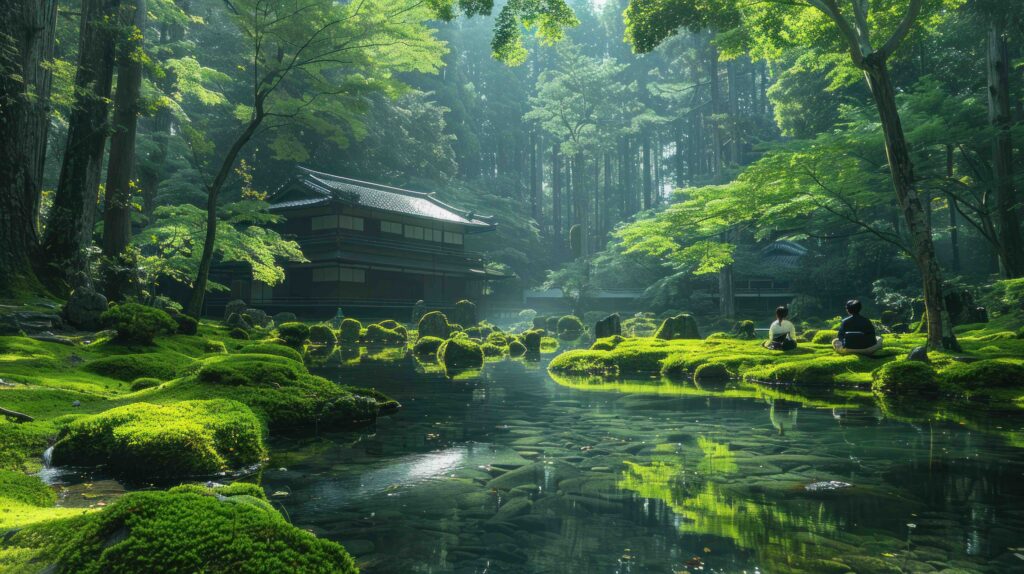
This is a very mysterious temple with a garden that has become a model for many temples, and 120 types of moss that cover the entire grounds. It is also famous for being a frequent visitor to Steve Jobs.
For the past 50 years, it has been by reservation only, and you can stroll through the gardens while copying sutras.
For this reason, it is not recommended for many people, but for those who seek true beauty like those seen on this website, it is highly recommended.
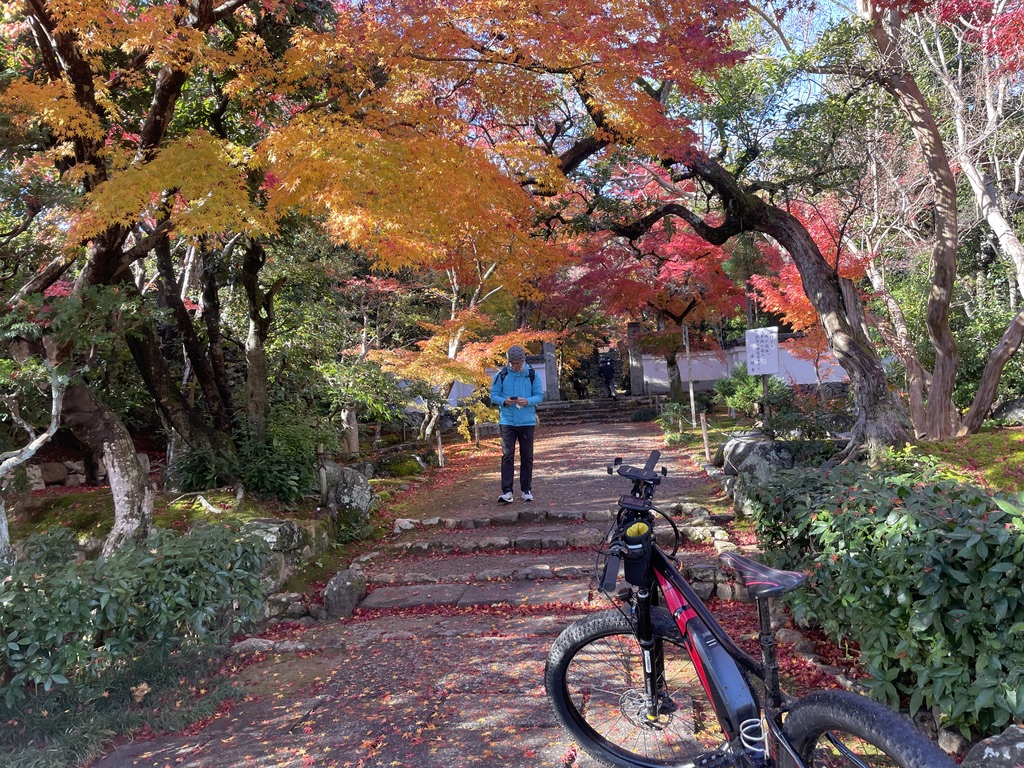
We didn't include it in our tour because the number of people allowed in at one time is very limited.
However, it's close to Arashiyama, so you can modify your tour a bit to visit the beautiful surrounding areas, such as Jizo-ji Temple and Take-dera Temple. You can go there on your own, so even if you can't make a reservation for Saiho-ji Temple, you'll still have a great time.
It is a 40 minute walk from Arashiyama and a 20 minute walk from Matsuo Taisha Station. If you use an E-Bike, it is 10 minutes from Arashiyama and 30 minutes from the Saiin rental shop.
Recommended #4 : Fushimi Inari Mountain
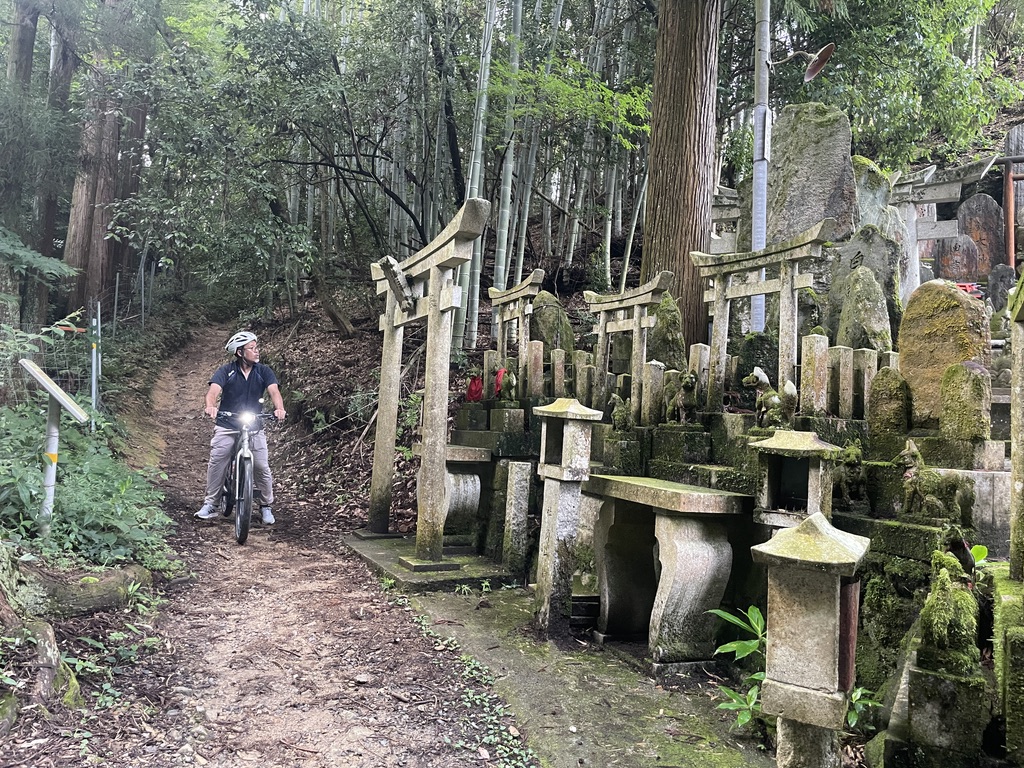
This sacred place of Japanese Shintoism is famous for its countless torii gates, which were donated by merchants throughout history, and show how much faith this place has attracted.
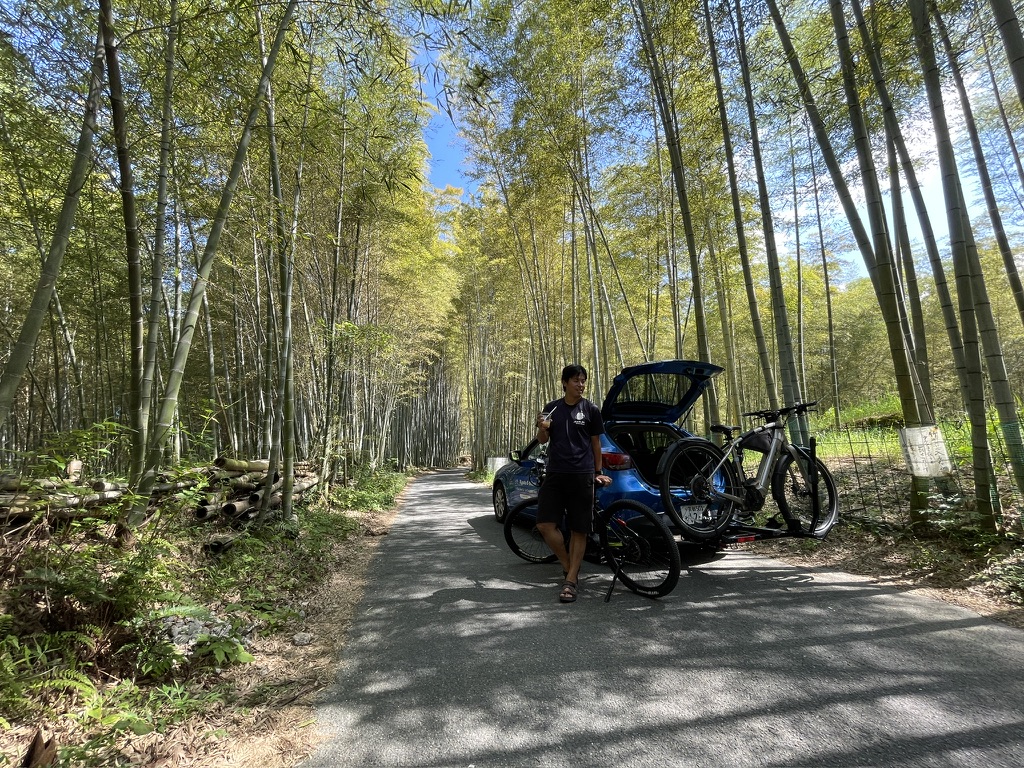
There are shrines and bamboo forests everywhere in the vast mountains, allowing you to experience the atmosphere of Japanese nature worship that is different from that of Buddhists.
It is a short walk from Inari Station. If you are using an E-Bike, it takes 30 minutes from Higashiyama area via the Kamogawa Cycling Road.
Not recommended : Sightseeing only around Arashiyama Station
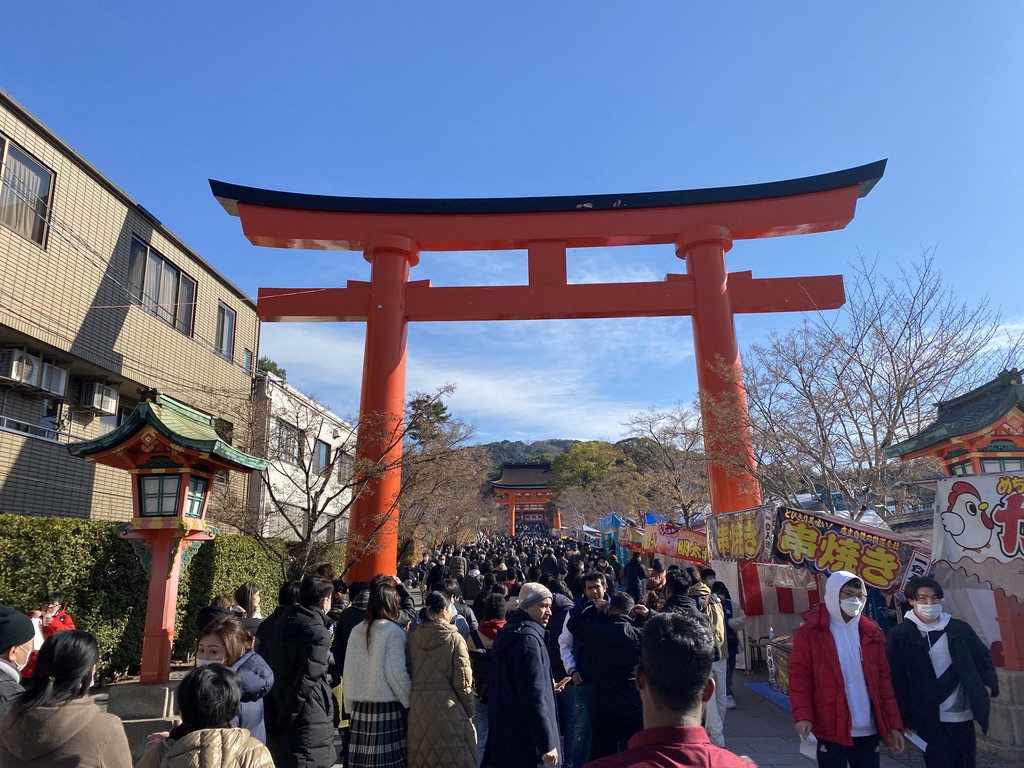
Fushimi Inari Taisha, located at the western entrance to Mt. Fushimi, is one of the top three busiest shrines in Japan. It is so packed with people that there is no space to see the torii gates or the mountain.
And the Senbon Torii Path that stretches out from there is packed with people, pushing and shoving each step as you move forward. The tranquil pictures in photos and brochures are from the distant past, completely lost in this age of overtourism.
You won't feel any of the mystique of Mt. Inari there, and you'll only be left with the fact that you "went to a famous place."
With our tour, you can completely avoid the crowds and take a tour of the original sacred site of Japanese Shinto, but if you go on your own, I recommend that you make an effort to break through the crowds, go a little off the torii path where everyone else is walking, and walk along the normal walking path.
Recommended #5 : Gion at night
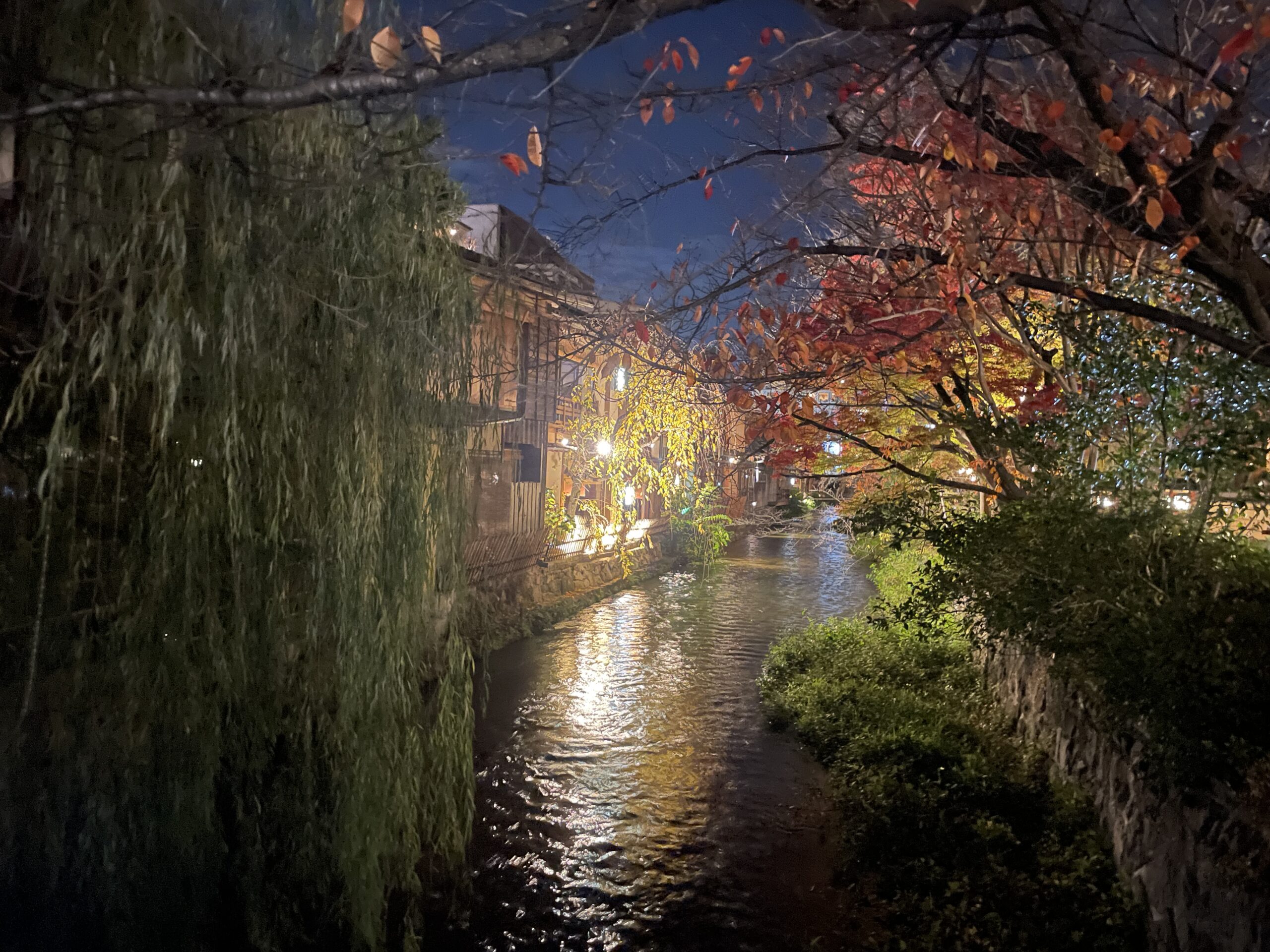
Gion Shirakawa
Gion is Japan's oldest social district. It is lined with restaurants that have been the stage for various historical events. There is also an entertainment district with modern pubs and bars.
Gion is divided into several areas, and if you want to enjoy the most ancient scenery, it's best to go along the moat called Gion Shirakawa at night.
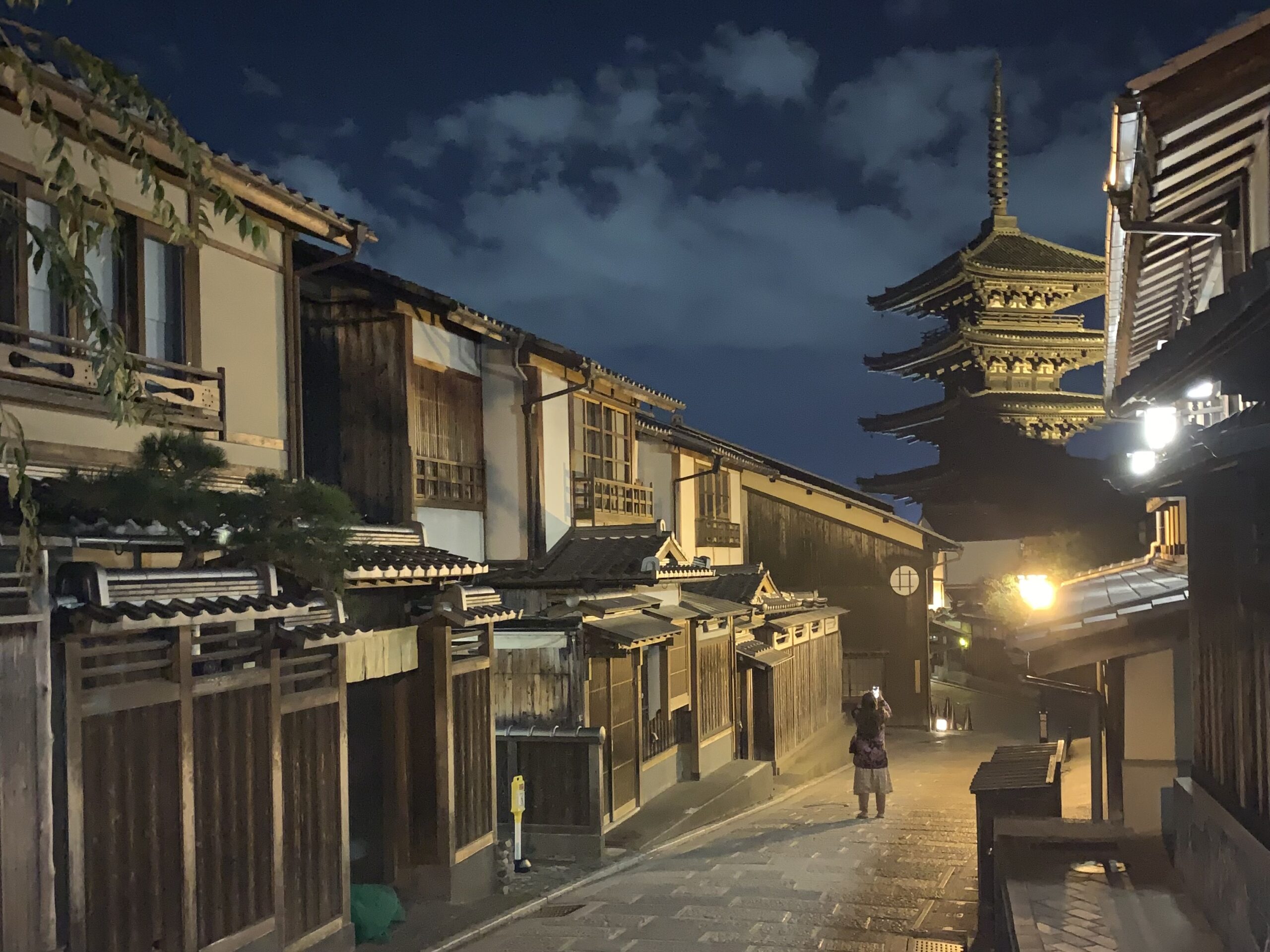
Ninenzaka and Sannenzaka
These are beautiful streets with old cobblestones and wooden houses, lined with many restaurants and souvenir shops. I used to enjoy walking around during the day, but I think it's much better at night these days.
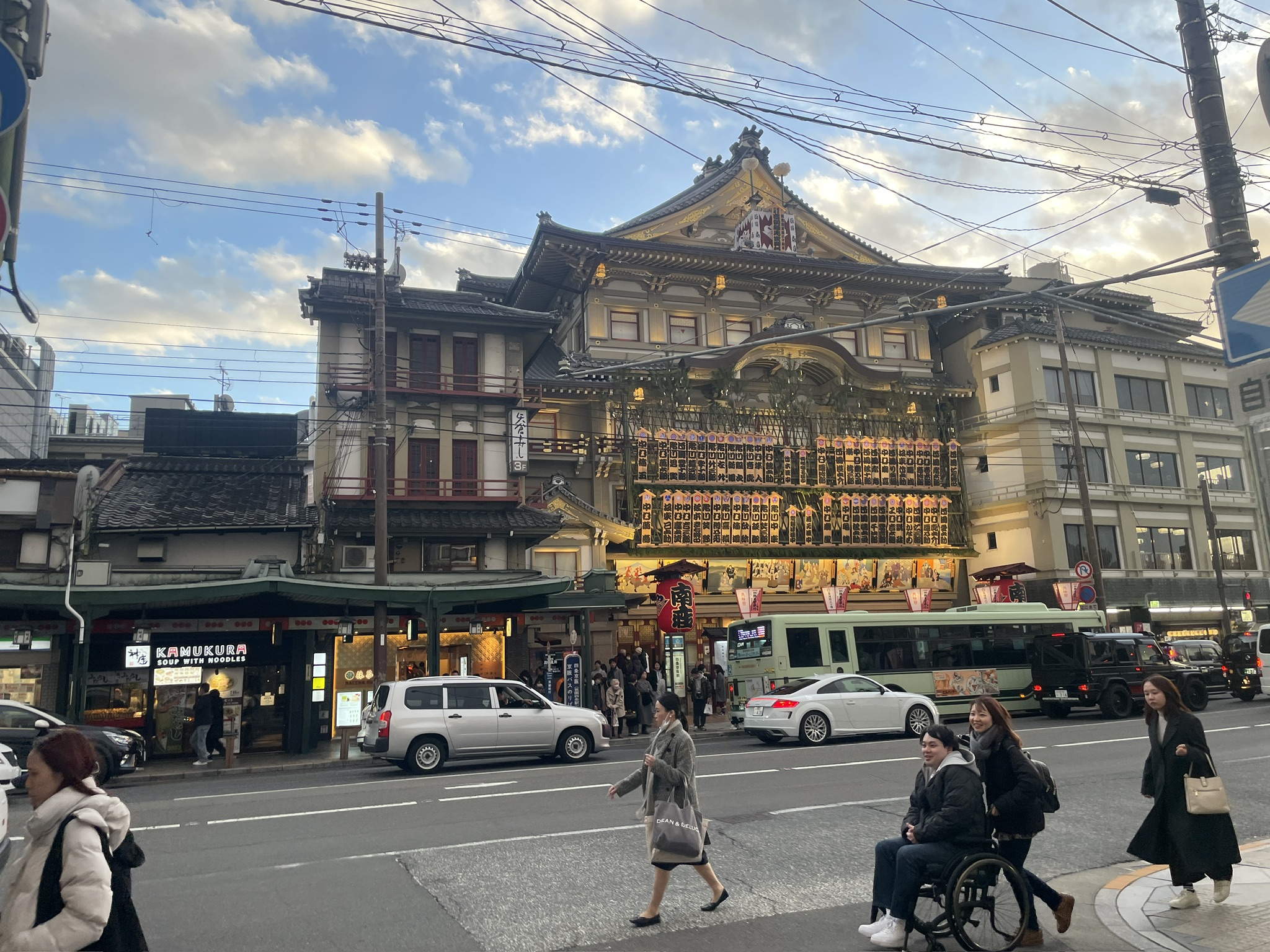
Minamiza Kabuki Theatre
Minamiza is located in the center, dividing Gion into north and south. It is the oldest theater in Japan, with 400 years of history. It has been the base for various traditional Japanese performing arts, including Kabuki.
There are many shops open in this area both day and night, so you will never run out of places to shop or get a snack.
There are a lot of people and cars, so it is best to avoid the area when it is too crowded.
Gion is just a short walk from Gion-Shijo Station and Kawaramachi Station. But if you want to experience the special atmosphere of Gion, join our Gion Night Cycling Tour! We can also guide you on foot if the weather is bad.
Not recommended : Ninenzaka, Sannenzaka, and Hanamikoji in the daytime
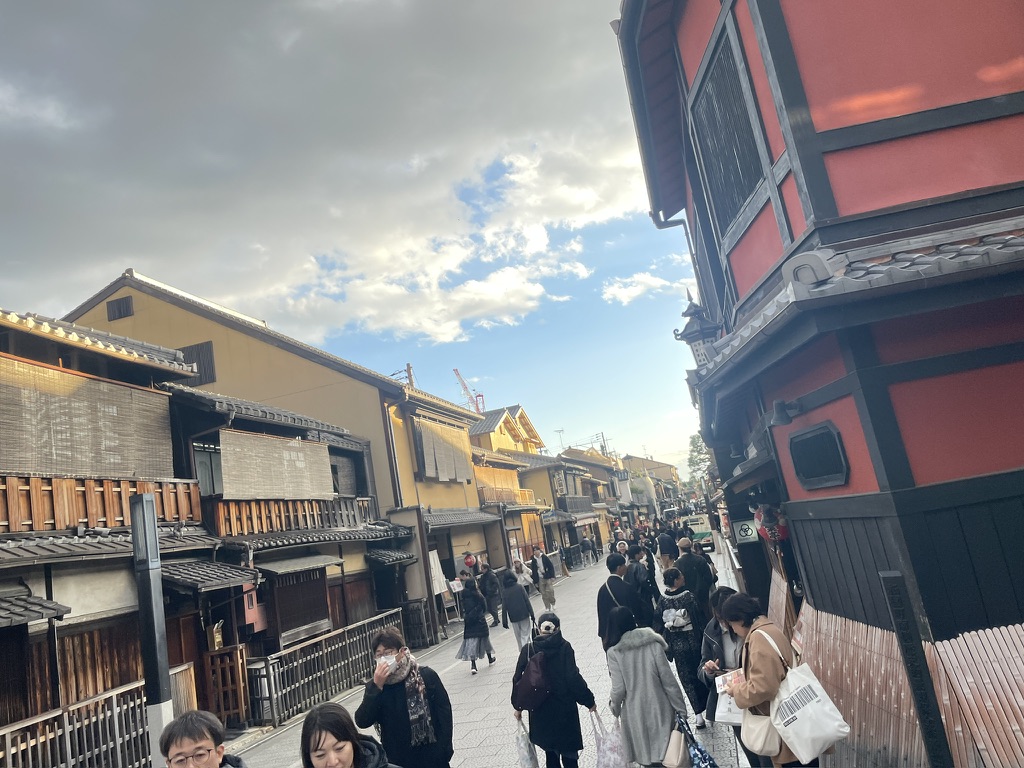
Gion, where you used to be able to enjoy shopping during the day, has been devastated by the large number of tourists. Geisha no longer walk around because they are bothered by people taking photos. You won't be able to enjoy strolling through the old streets, seeing the beautiful maiko, shopping, or eating and drinking.
I recommend that you go at a time that is convenient for you.
Recommended #6 : Kamo River (especially the upper reaches)
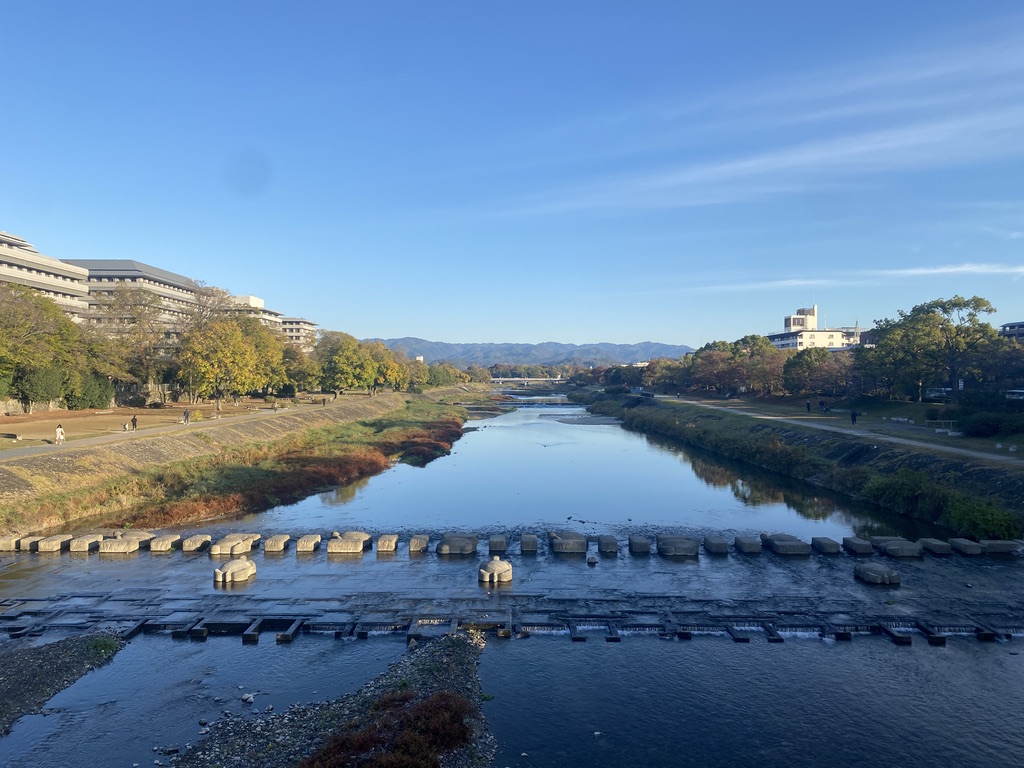
Like the Seine in Paris and the Tiber in Rome, the Kamo River is a river with 1,500 years of history that flows through the center of the capital.
Its greatest feature is its beauty, which has earned it the nickname "urban river with the best water quality in the world." Despite the strict landscape ordinances and sewage regulations, the Kamo River flows through a city of one million people, yet it is so clean that citizens can enjoy playing in the river or visiting cafes.
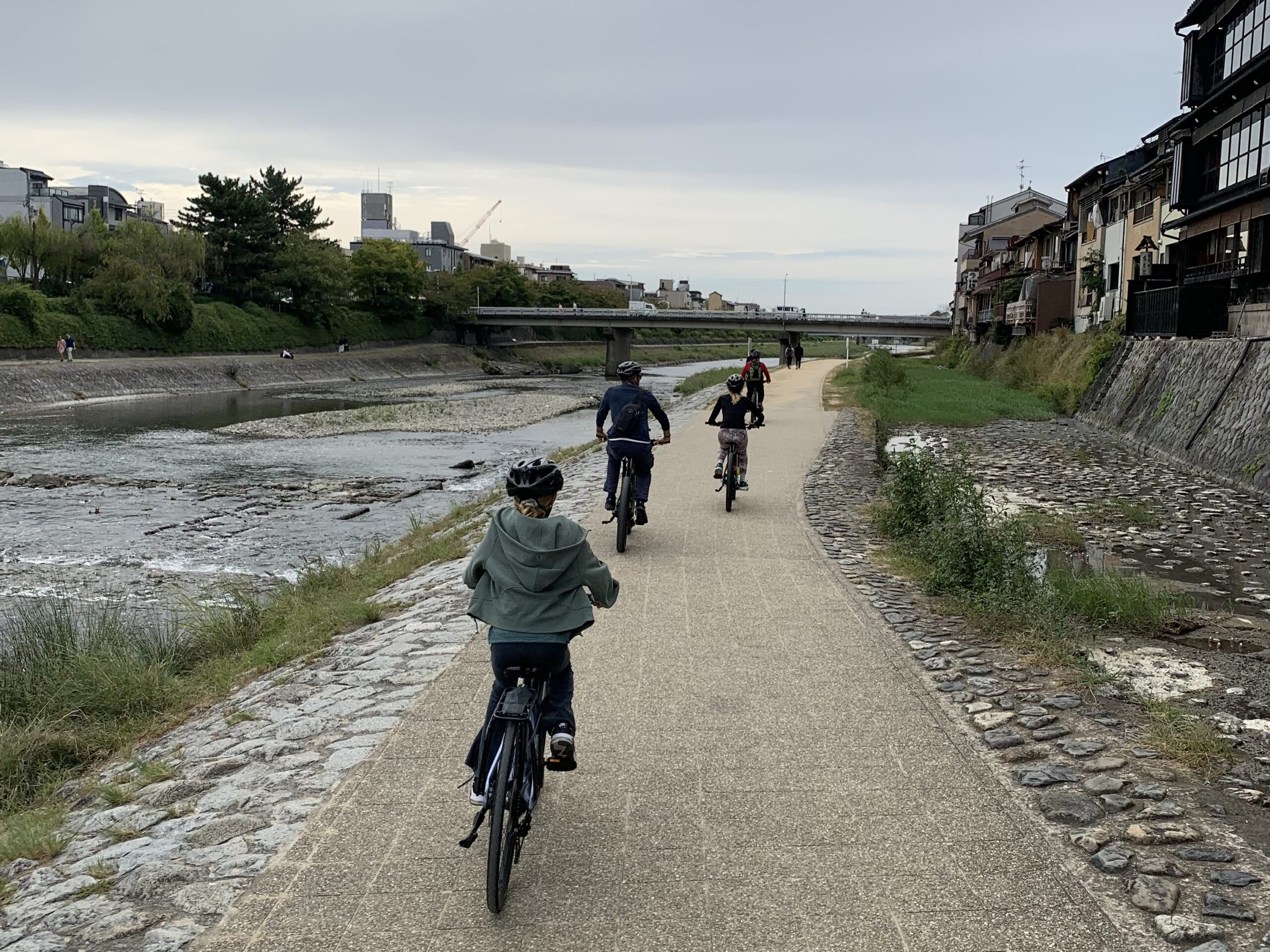
There is a cycle path along the river, allowing you to cycle smoothly while viewing the traditional wooden architecture.
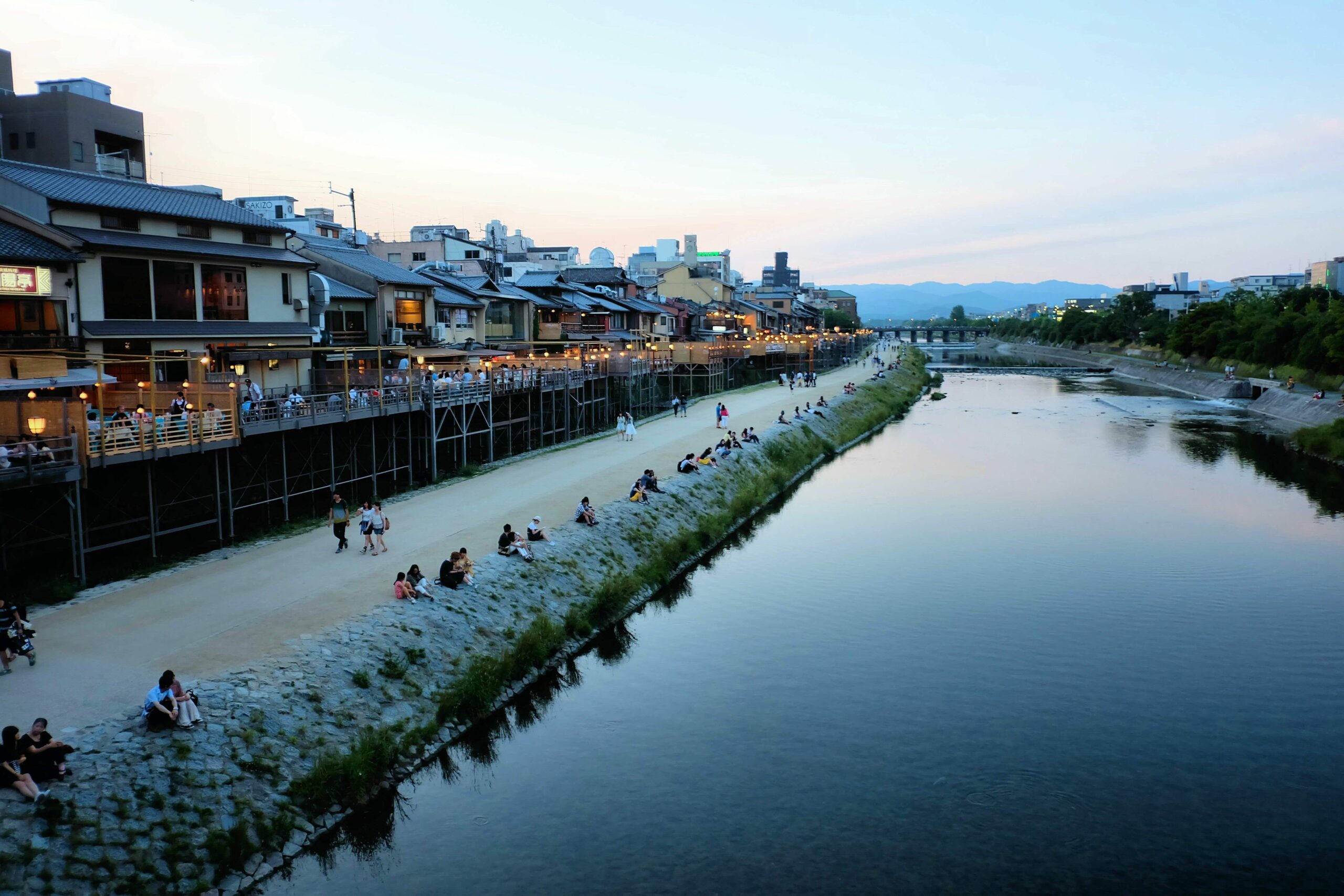
Summer Riverside Terrace
The high season at Kamogawa is summer, when floors are installed on the shoreline and cafes and bars are open from May to September. Summer in Kyoto is hot, so the Kyoto way to relax is to stay still during the day and hang out along the Kamogawa River in the evening.
Kamogawa is easy for anyone to get to. We also offer a fun cycling tour from Kamogawa to Fushimi, so please join us!
Recommended #7 : Kinkaku-ji (Golden Temple)
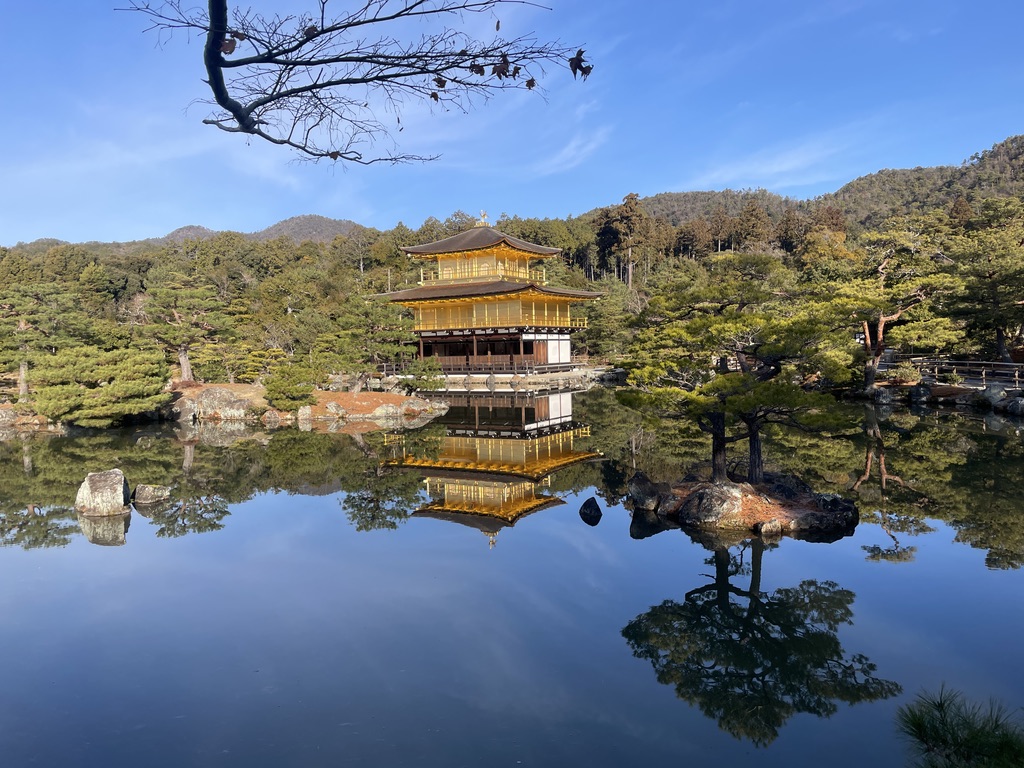
Kinkakuji is a temple covered in gold leaf, built about 600 years ago by a shogun as his own villa.
The golden temple and garden are beautiful.
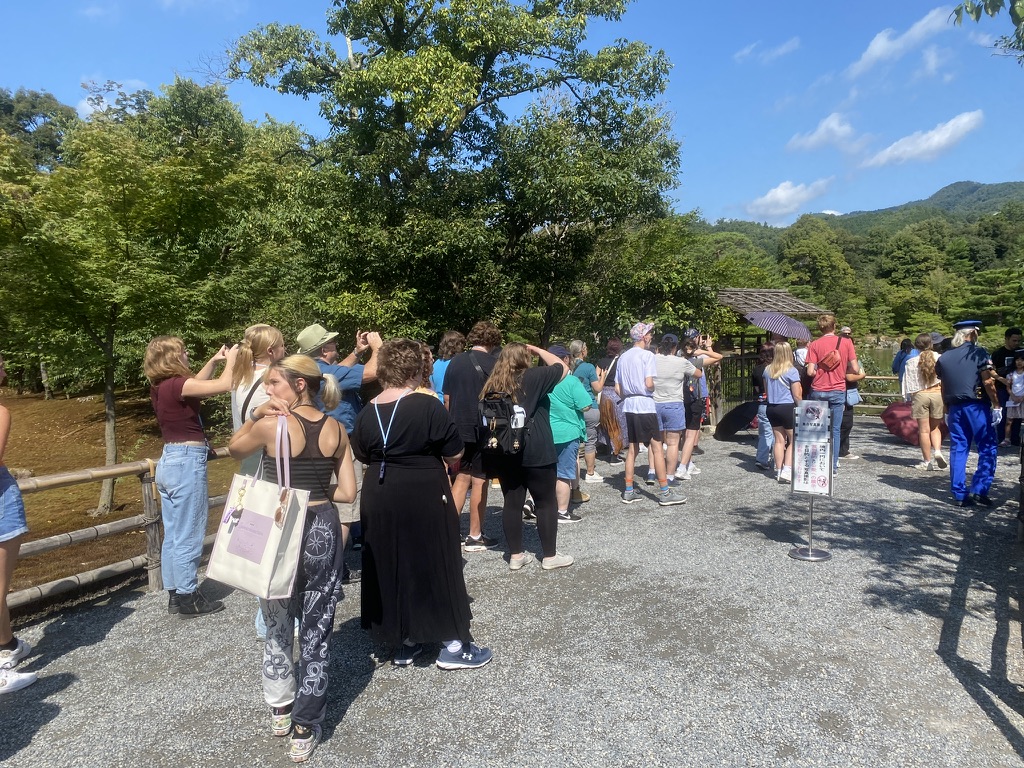
There are a lot of people, but the guidance is good and it is far from the city center, so sightseeing is relatively smooth.
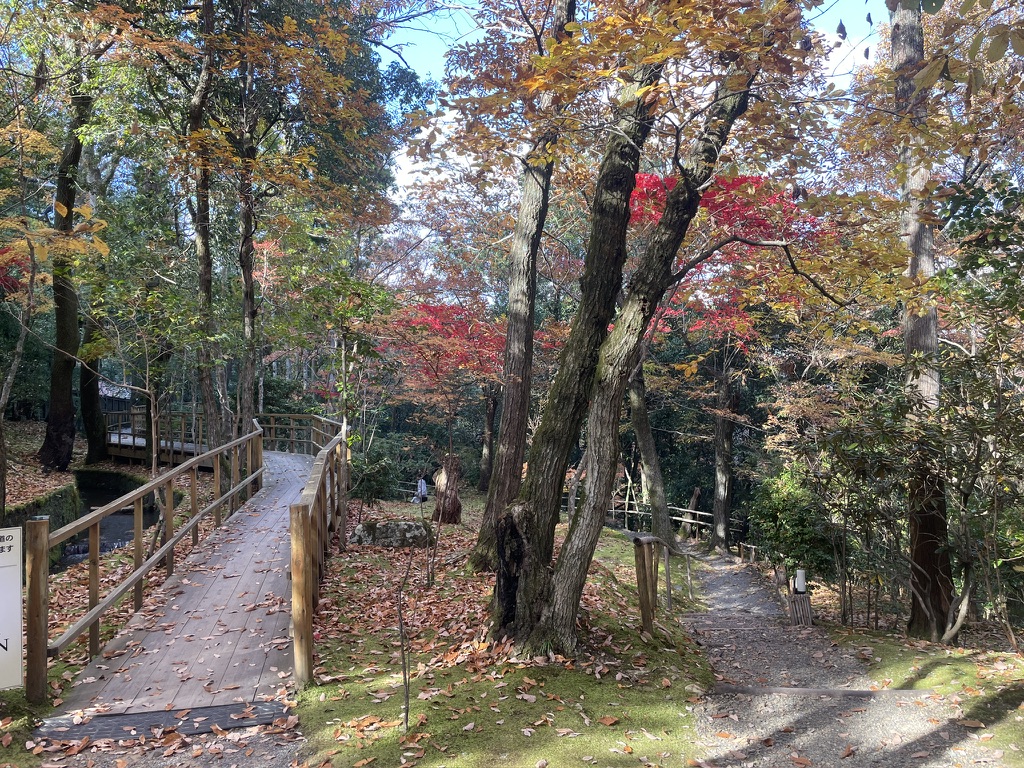
Shozan Garden
A hidden gem just a 15-minute walk from Kinkakuji Temple is Shozan Resort.
This is an area where an old garden has been bought by a traditional silk weaving company and turned into a wedding venue and hotel, and anyone can enter freely.
It is not known as a tourist spot, so you can enjoy the vast gardens that are almost deserted.
Many people go to Kinkakuji Temple by bus, but by e-bike you can get there in about 30 minutes from central Kyoto.
We offer a cycling tour that goes from Kinkakuji Temple to Arashiyama, with hotel pick-up and drop-off included, so please come and join us.
Recommended #8 : Ginkaku-ji Temple and the Philosopher's Path
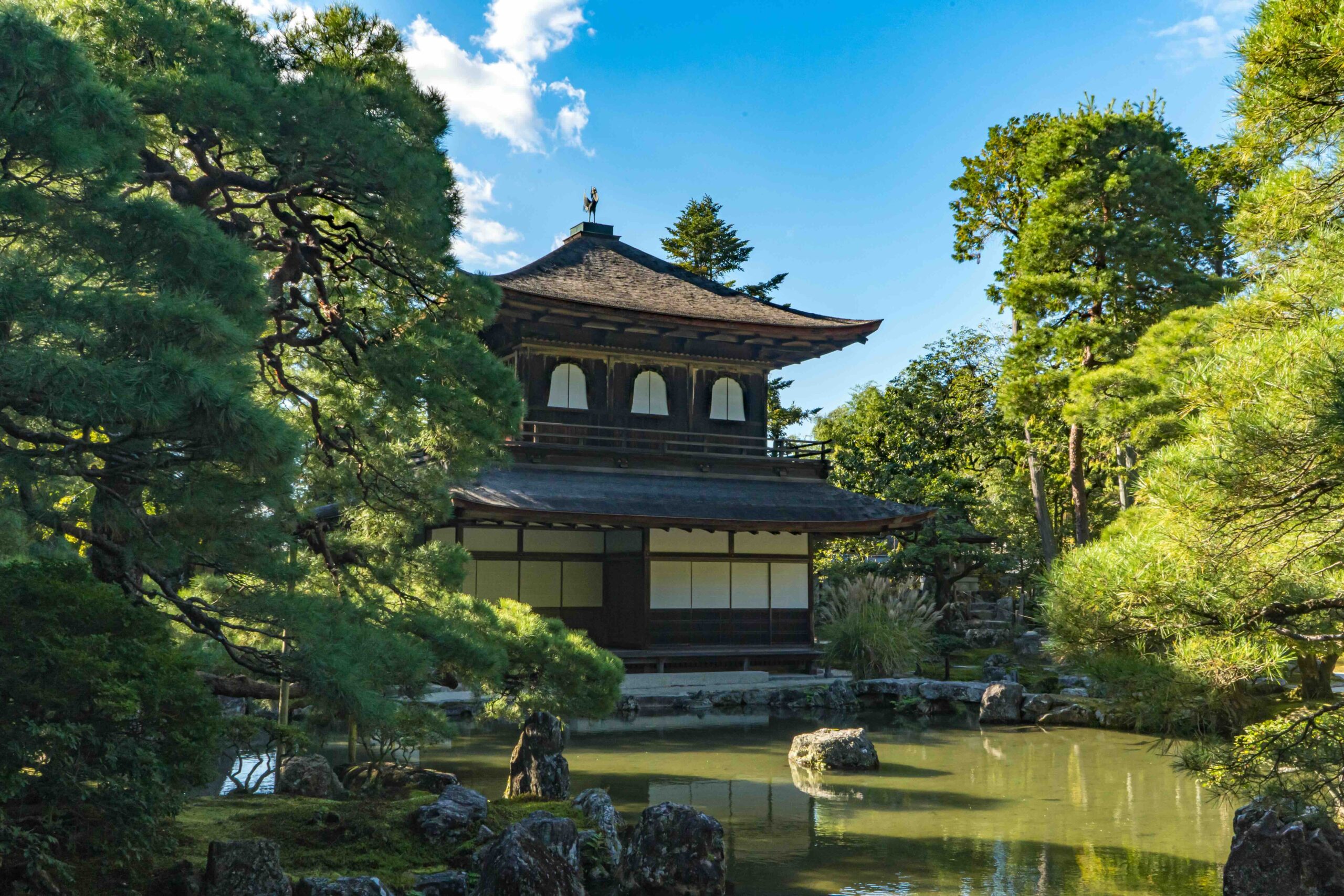
The Ginkakuji Temple was built by the next Shogun in rivalry with Kinkakuji Temple. In contrast to the gorgeous Kinkakuji Temple, it symbolizes the simplicity of Japanese culture known as "Zen."
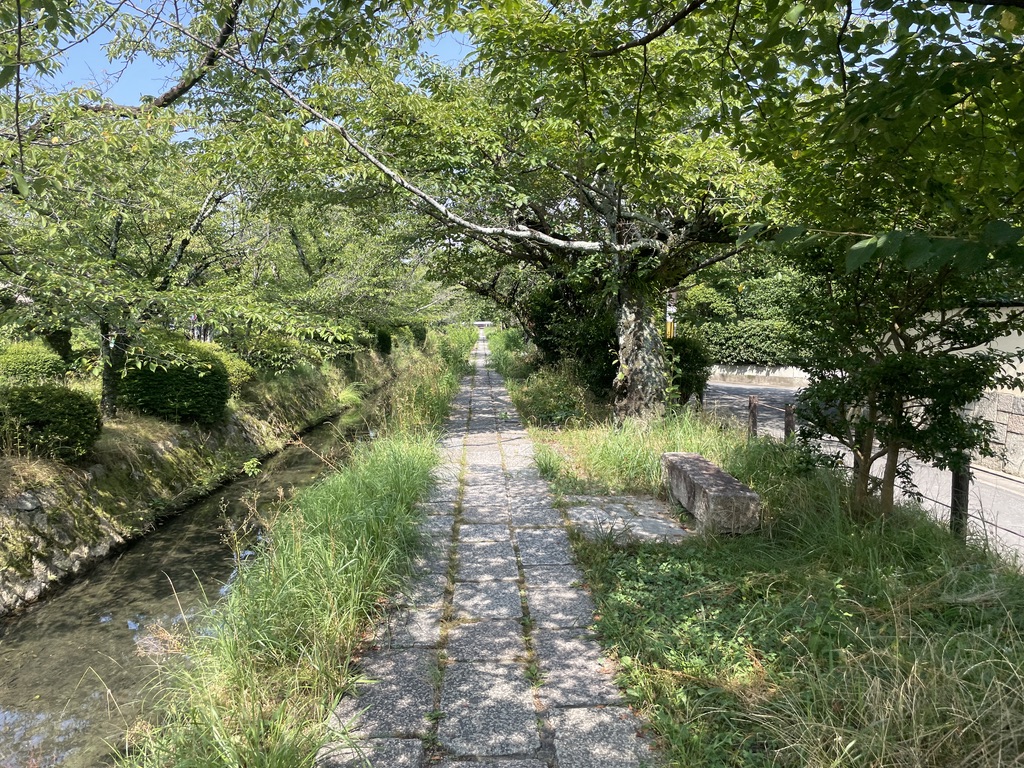
Philosopher's Path
The path along the canal that stretches south from Ginkakuji Temple is known as the Philosopher's Path. It was named after the philosopher who used to walk there about 100 years ago.
Personally, I think the other canal paths are just as wonderful, but for some reason only a few sections are crowded with people.
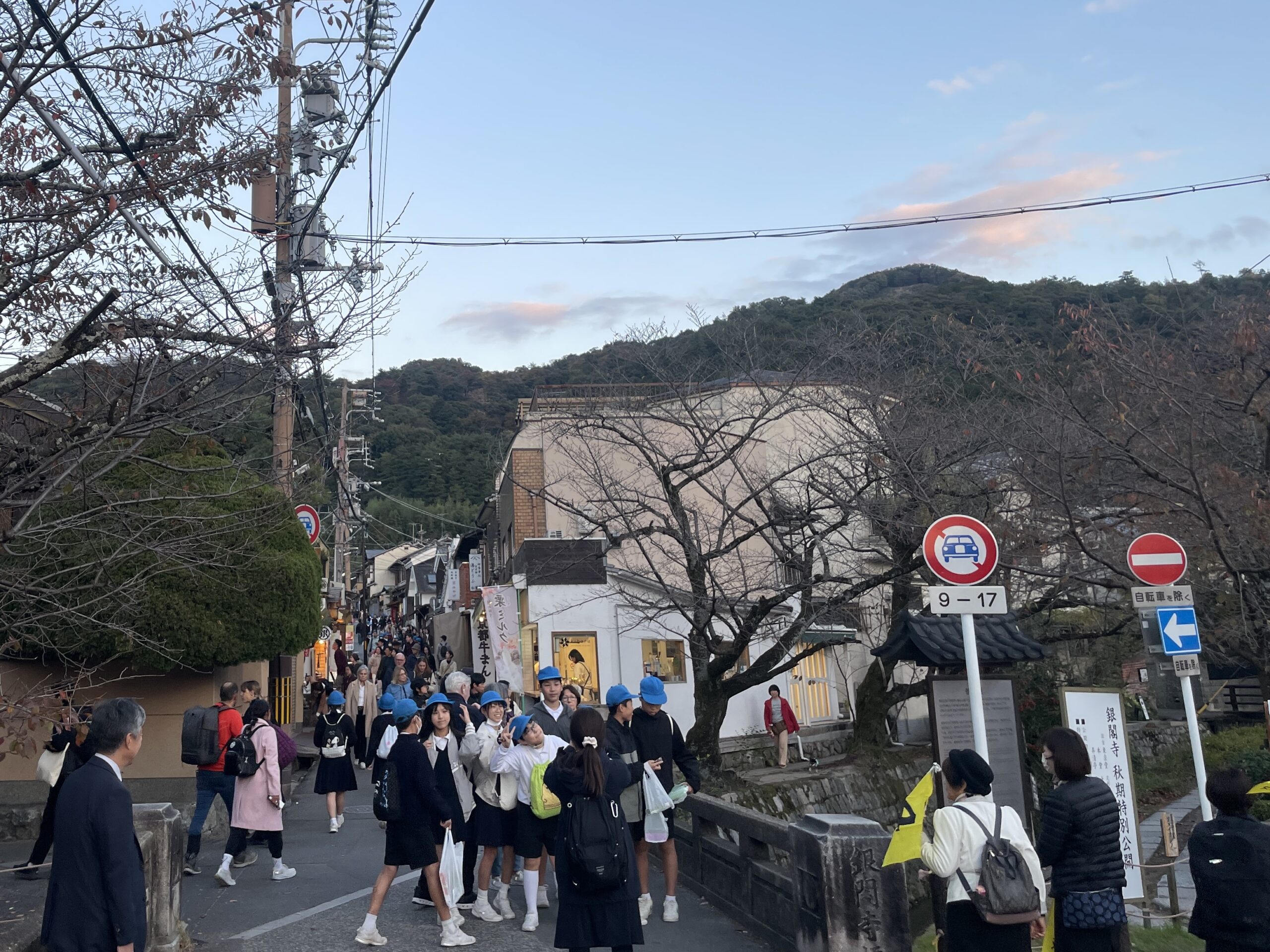
Be careful on holidays
Ginkakuji Temple is often a popular spot for student training, so it gets crowded, especially on weekends. If it's too crowded, you might want to skip it and see other temples nearby.
Ginkakuji is a little hard to get to, about a 30 minute walk from the station. By E-Bike you can get there in just a few minutes from other areas. We are not running guided tours as of 2025, but we recommend renting one of our E-Bikes and going there.
Recommended #9 : Higashi-Honganji
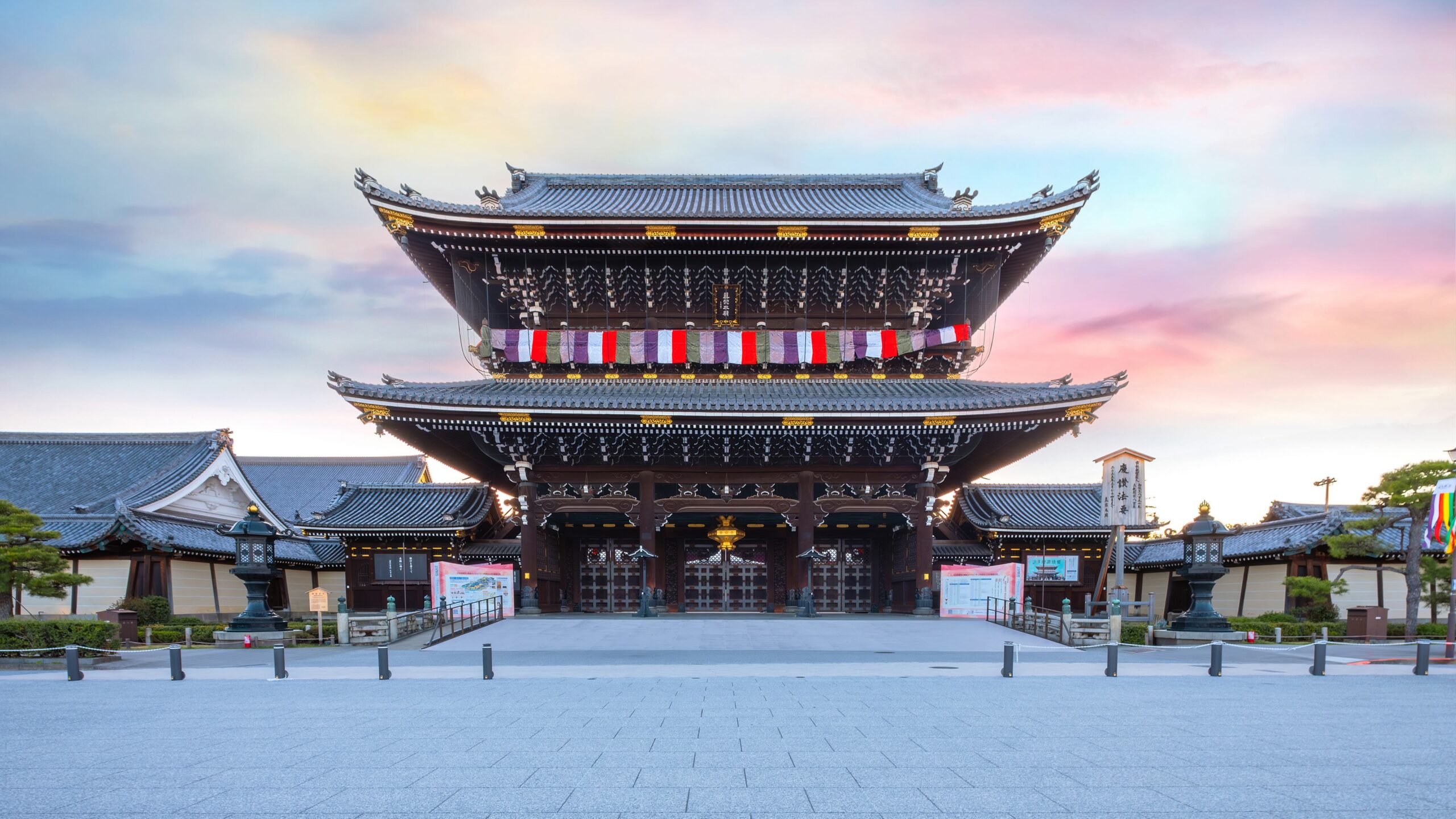
One of the world's largest wooden buildings
Depending on how you define size, the main hall of Higashi Honganji Temple is one of the largest wooden buildings in the world. The ability to build buildings of this size out of wood, rather than stone as in the West, is a traditional technique unique to Japan, a country prone to earthquakes.
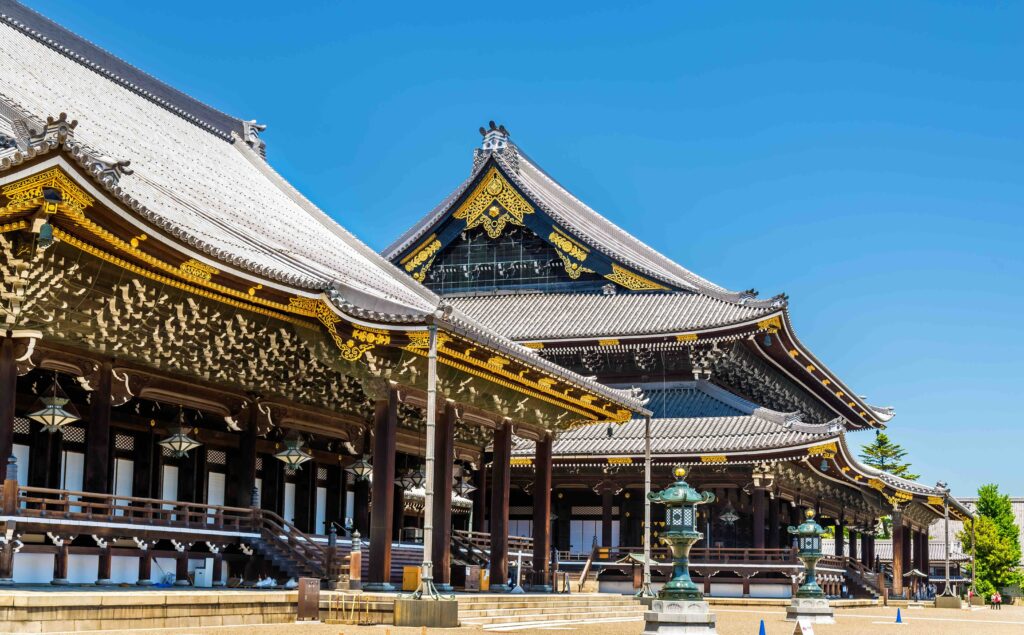
The head temple of the Jodo-shin sect
Jodo-shin sect is the sect with the largest number of adherents in Japanese Buddhism. Unlike ancient Buddhism, which was followed by aristocrats and placed emphasis on knowledge and research, and Zen sect, which was followed by samurai and placed emphasis on training and experience, Jodo-shin sect is a simpler sect aimed at the general public.
Therefore, in contrast to the small and elegant buildings of Zen temples, Jodo sect buildings are huge and luxurious so that ordinary people can come to worship in large numbers.
Higashi Honganji Temple is a short walk from Kyoto Station. There is also a bicycle parking lot.
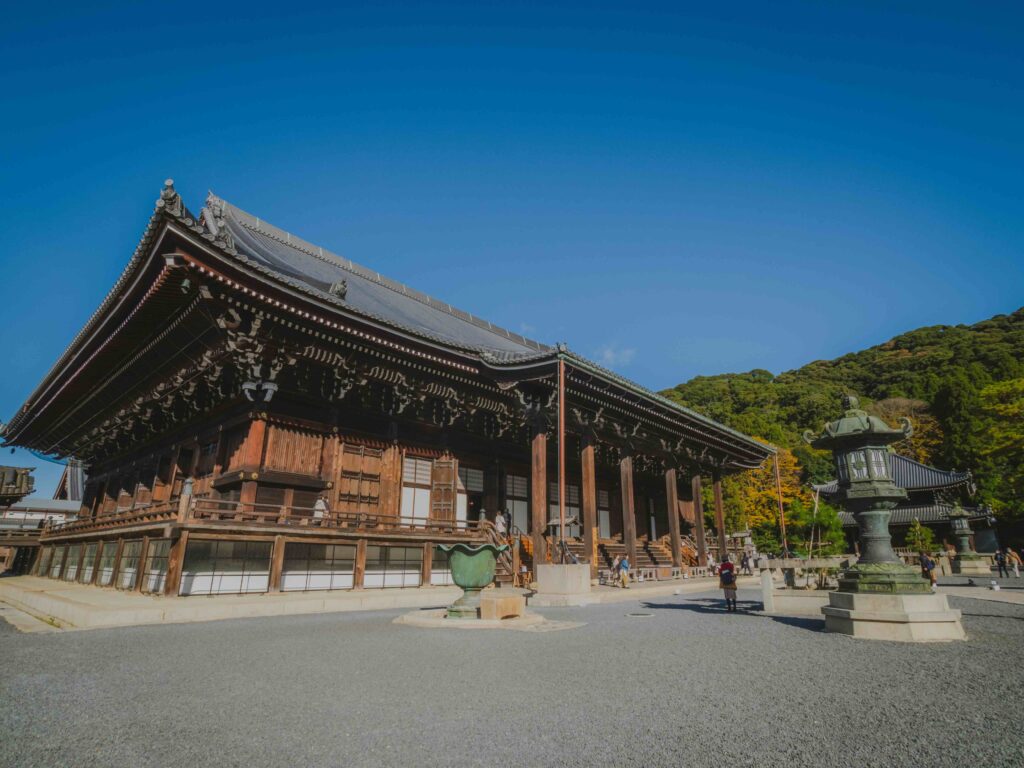
Chion-in in Higashiyama
Equally recommended is Chion-in Temple in the Higashiyama area of Kyoto, a Jodo sect temple, the elder sect of Jodo Shin Sect.
Recommended #10 : Nishiki Market & Teramachi Shopping Street (morning)
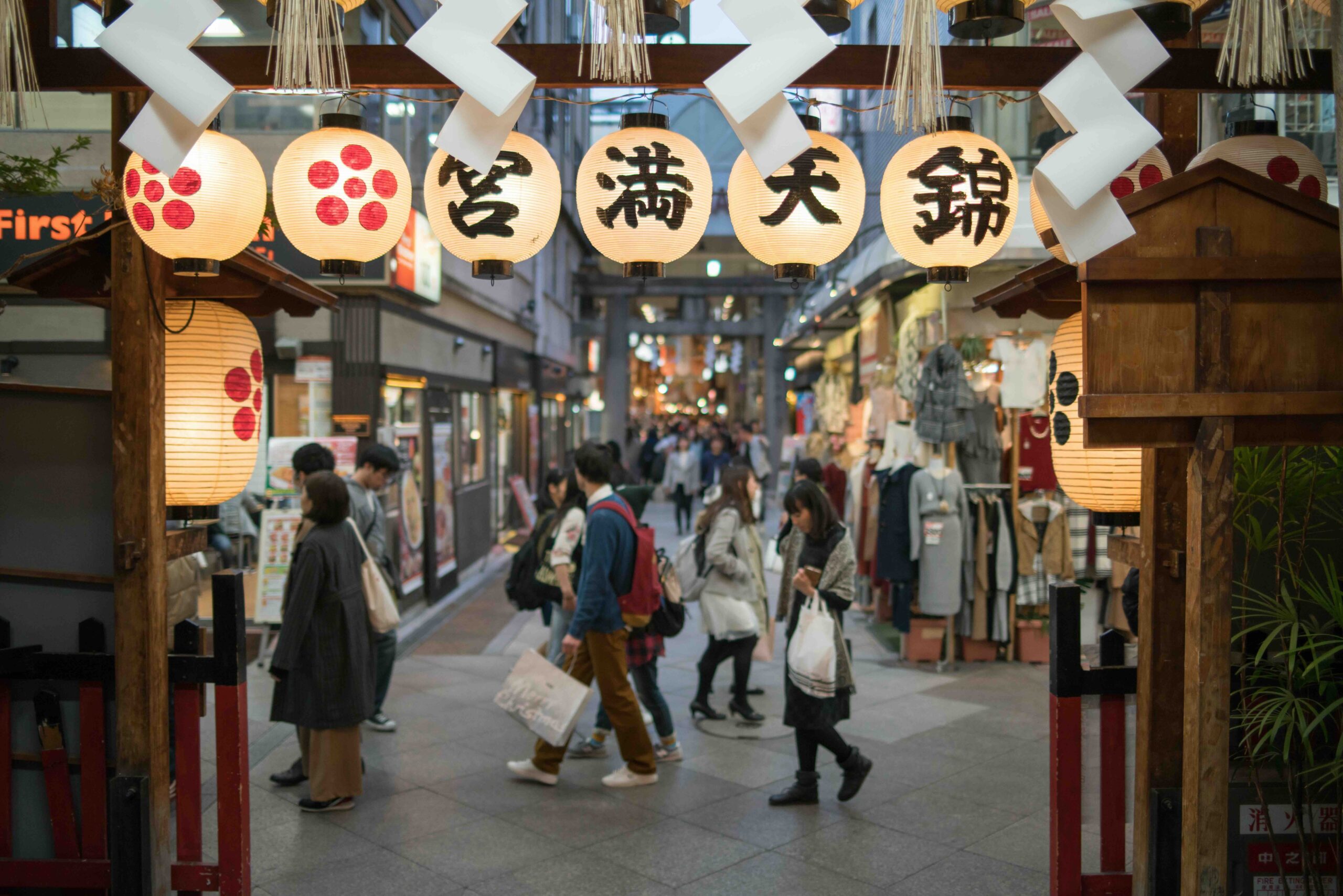
A market with 1,300 years of history
Nishiki Market has long flourished as a shopping street dealing in food. It is now a tourist market with about 130 stores in a 400m long arcade.
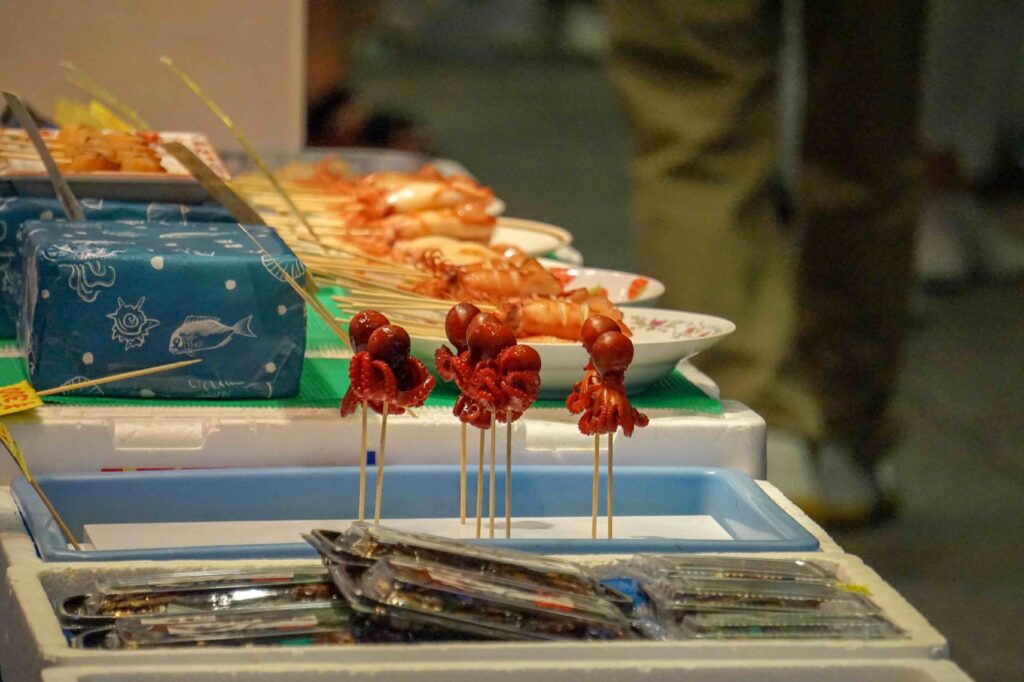
Amusements for tourists
Nishiki Market used to have many food stores for locals, but now most of the stores are for tourists. Tourists will have a great time buying skewers, snacks, and souvenirs to eat on the go.

Teramachi Shopping Street
Teramachi Shopping Street is a larger shopping street connected to the eastern end of Nishiki Market. Together with the neighboring Kyogoku Shopping Street, it is 1,300 meters long and it takes half a day to walk there. This is a typical Japanese shopping street, with all kinds of shops that can be enjoyed by people of all ages.
Nishiki Market is located in the center of Kyoto and is easily accessible by train or bus. There are bicycle parking lots nearby, so it's easy to get there with our rental bikes.
Not recommended : Nishiki Market on a holiday afternoon

Weekday mornings are better
Nishiki Market is best to go between 10 and 11am. Even so, it can get very crowded. Especially in the afternoon on holidays, it can get murderously crowded. This is not just a metaphor, but it can get really hard to breathe, as shown in the photo, so it's not a good time to enjoy sightseeing or shopping.
Live Camera
If you have family members or other people you need to care for, check the congestion situation on the live camera.
Slightly deeper spots
I don't think most tourists go there, but I'll tell you about some of my personal favorite, off-the-beaten-path places.
Ichijoji Ramen Street
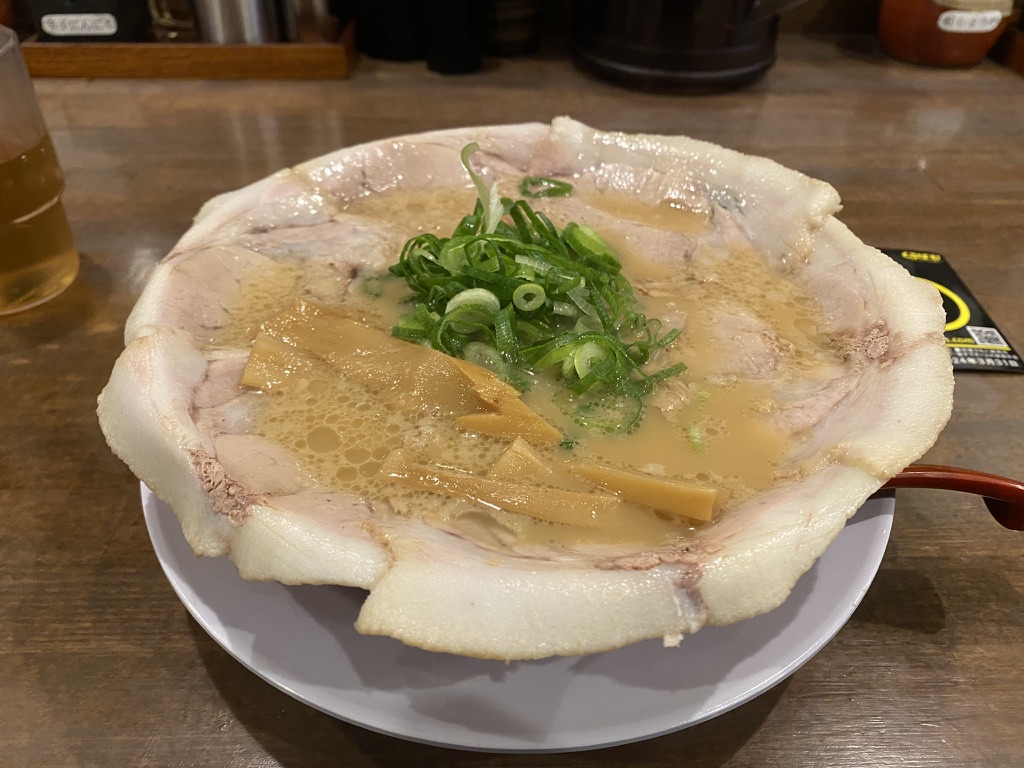
Kansai's top ramen shops compete
For Japanese ramen enthusiasts, Kyoto is the mecca of Kansai ramen. Many famous national chains have their headquarters in Ichijoji, where skilled ramen chefs still compete with each other to show off their skills.

There are over 30 ramen shops in a very small area, and no general tourists at all. All you see are ramen enthusiasts from all over the Kansai region.
For most foreigners looking at this page, the ramen shops in Kiyamachi-dori and Gion are delicious enough, so I don't think there's any need to come all the way to Ichijoji and queue up.
However, if you, like me, have become fascinated by ramen and become a ramen fanatic, you should try Kyoto's finest ramen at least once.
Which ramen shop in this area is recommended? It's a stupid question. If you like ramen, you should be able to judge it by the appearance of the shop.
Toei Kyoto Studio Park
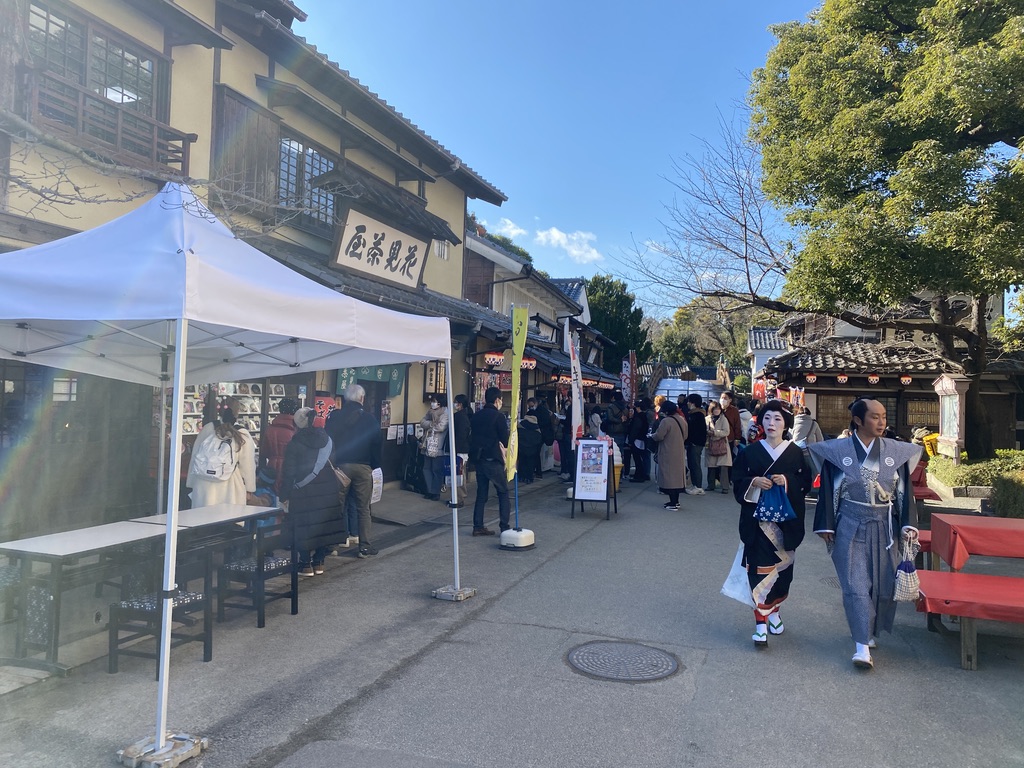
Japanese historical drama theme park
This is a filming location and theme park operated by Toei, Japan's largest movie company. The city of Kyoto from over 200 years ago has been accurately recreated, and children can have fun here, too, with attractions such as a ninja park and a samurai experience.

The holy land of Japanese period dramas
Kyoto used to be a movie town that was called the "Hollywood of Japan." Until about 40 years ago, Japanese movies were all period dramas, and many of them were filmed in Kyoto, where the old town still remains.
Toei Studio Park is a 15-minute walk from JR Uzumasa Station. There is a bicycle parking lot, so you can easily get there by rental bicycle.
Uji, the tea town
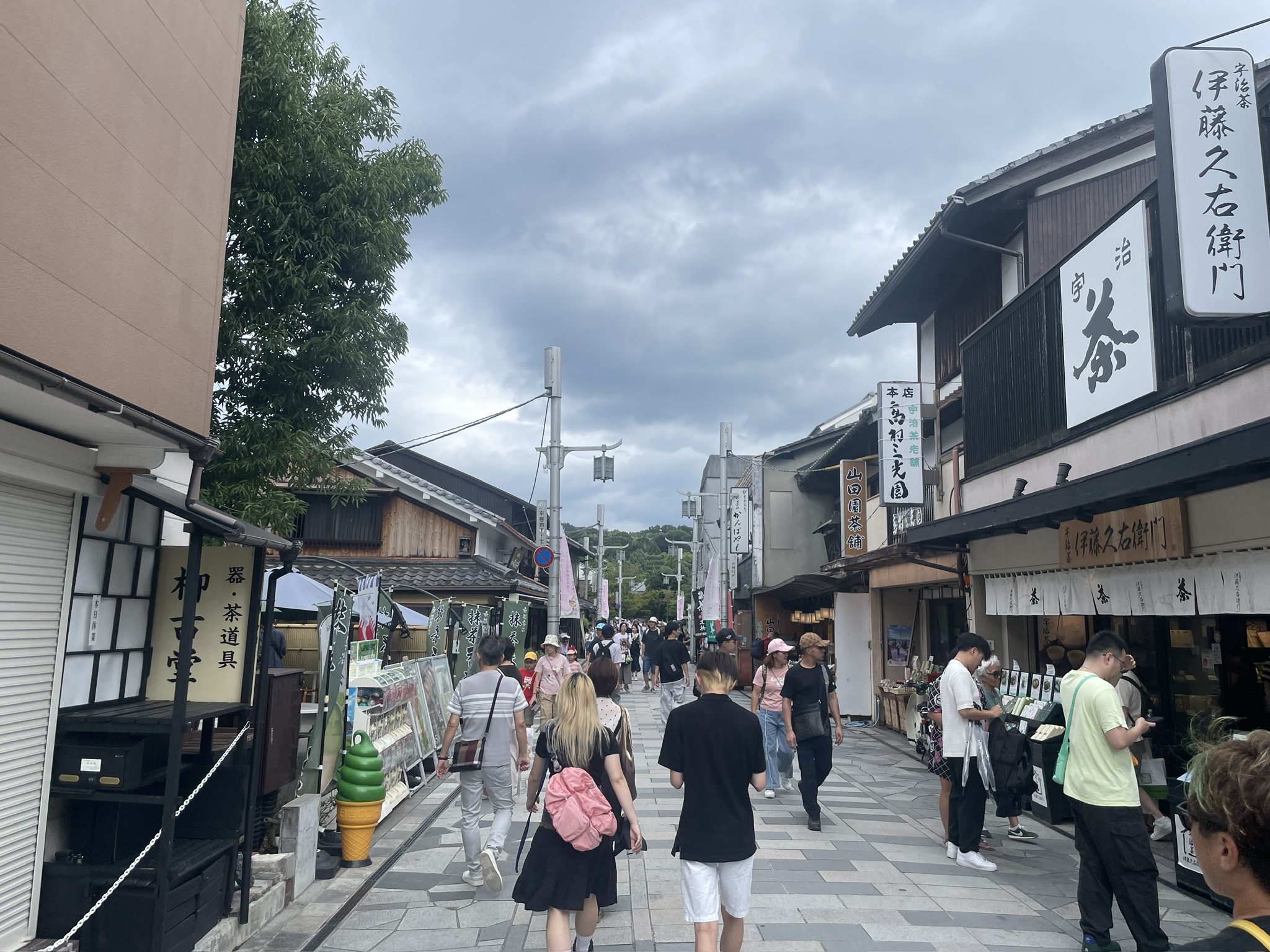
The town with Japan's best tea houses
Uji tea is the oldest and highest quality tea brand in Japan. Uji is home to many tea shops, where you can enjoy not only high-quality tea leaves, but also tea ice cream, tea soba noodles, tea sake and all kinds of other tea dishes.

Tea ceremony
You can also experience tea ceremonies in Uji. There are many in Kyoto and Tokyo, but the real experience of drinking Uji tea while looking out at the Uji River can only be enjoyed in Uji.
There is also a tea museum.
Uji is a 20-minute train ride from Kyoto Station.
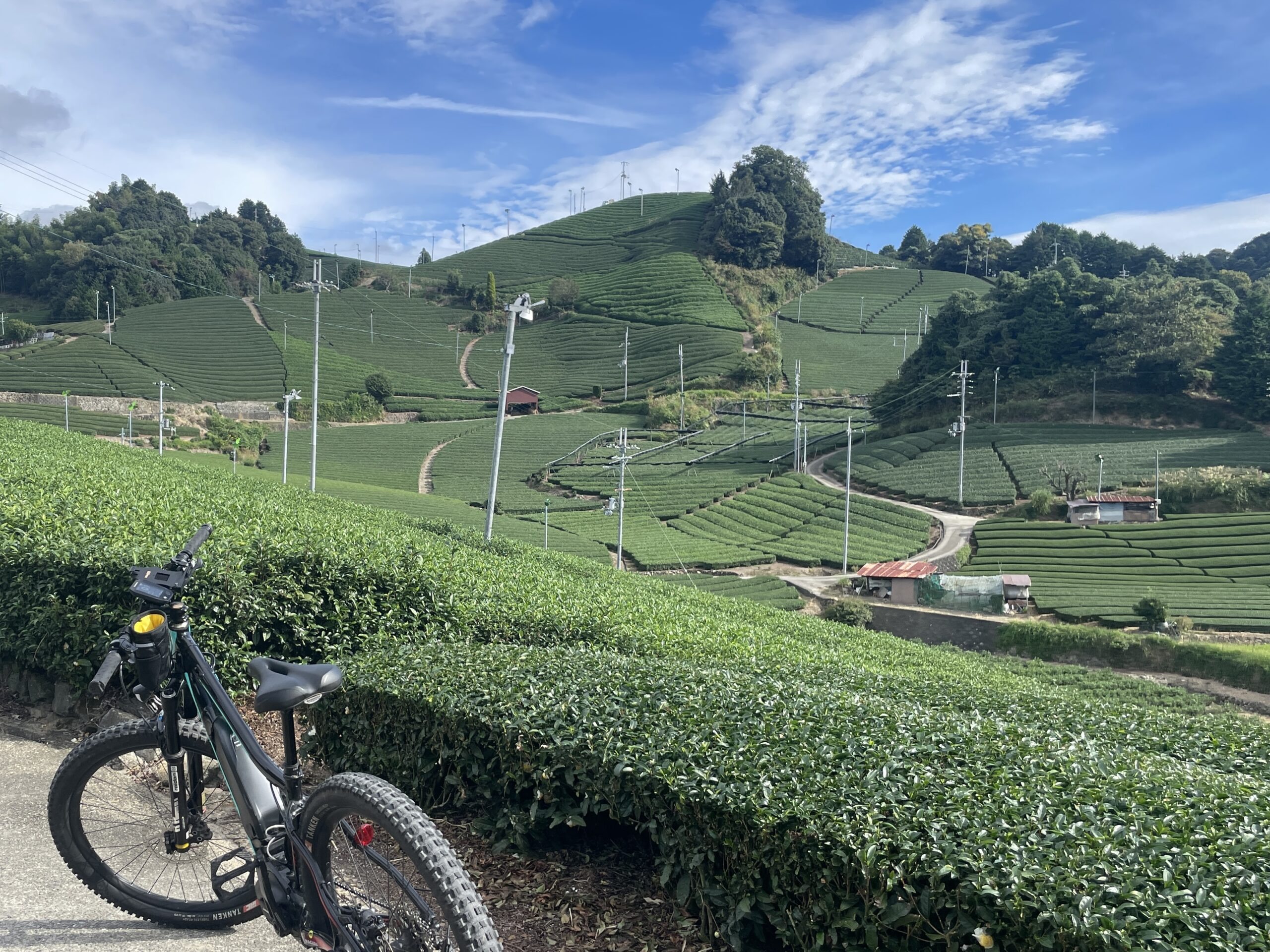
We also offer tours to Uji that take you through Wazuka, a vast tea plantation with 800 years of history, where the majority of Uji tea is produced.
Fushimi, the sake town
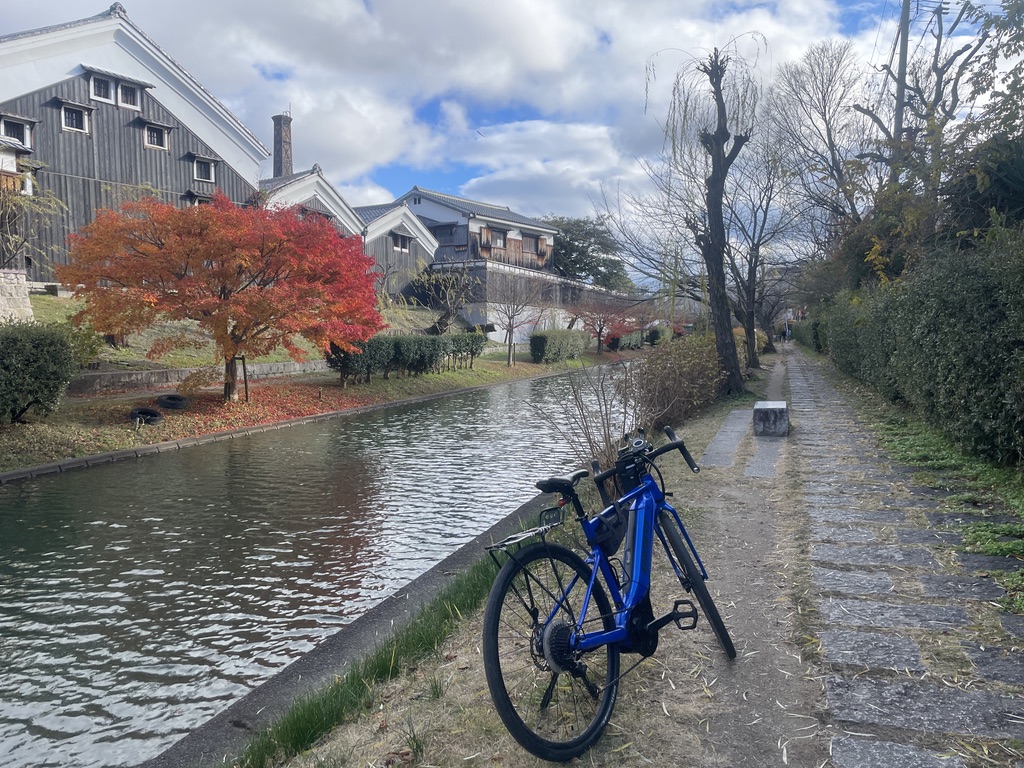
Japan's largest sake brewing town
Fushimi is blessed with underground water that is perfect for sake brewing, and because it is connected to Kyoto and Osaka by canals, many sake breweries have been gathering there for the past 400 years. Even today, there are more than 20 sake breweries in the area.
The city is crisscrossed with canals, making it a great place to walk or cycle.
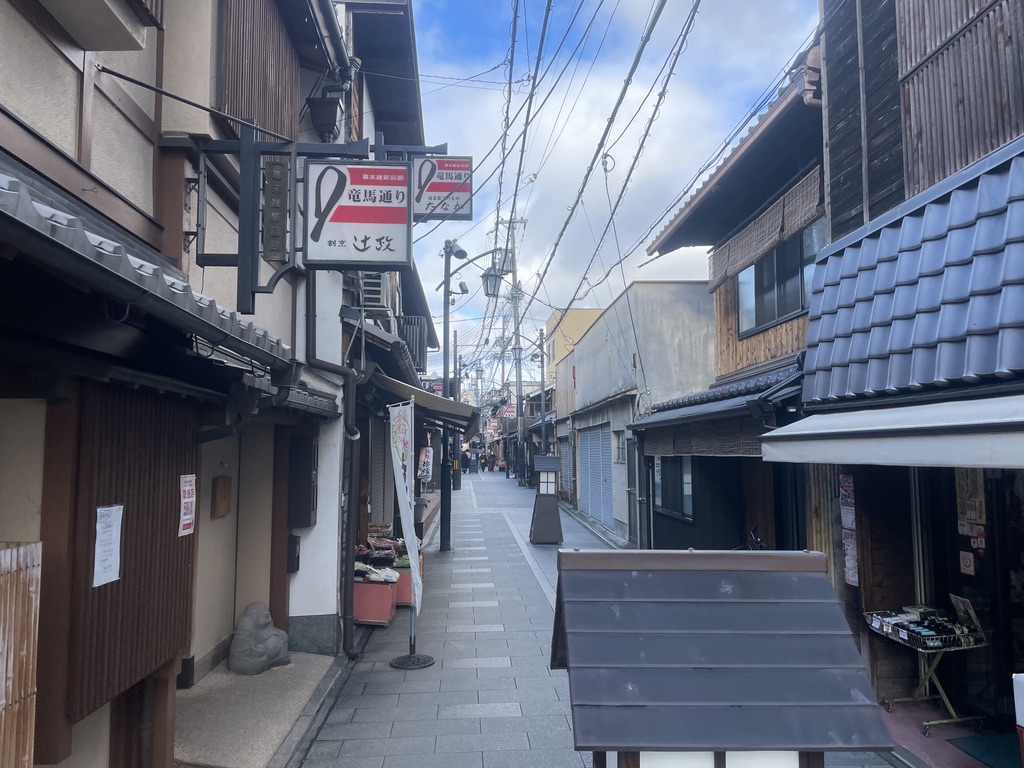
A town for bar hopping
Of course, there are plenty of bars to choose from and it's fun to wander around at night trying different drinks.

The tasting set of 18 types of sake is also popular.
It's a 15-minute train ride from Kyoto, or a 30-minute walk from Fushimi-Momoyama Station. If you use an E-Bike, it's 30 minutes from Kyoto, but since drinking and driving is illegal, it's best to use a drop-off service.
Kiyotaki Falls (Hiking or Cycling)
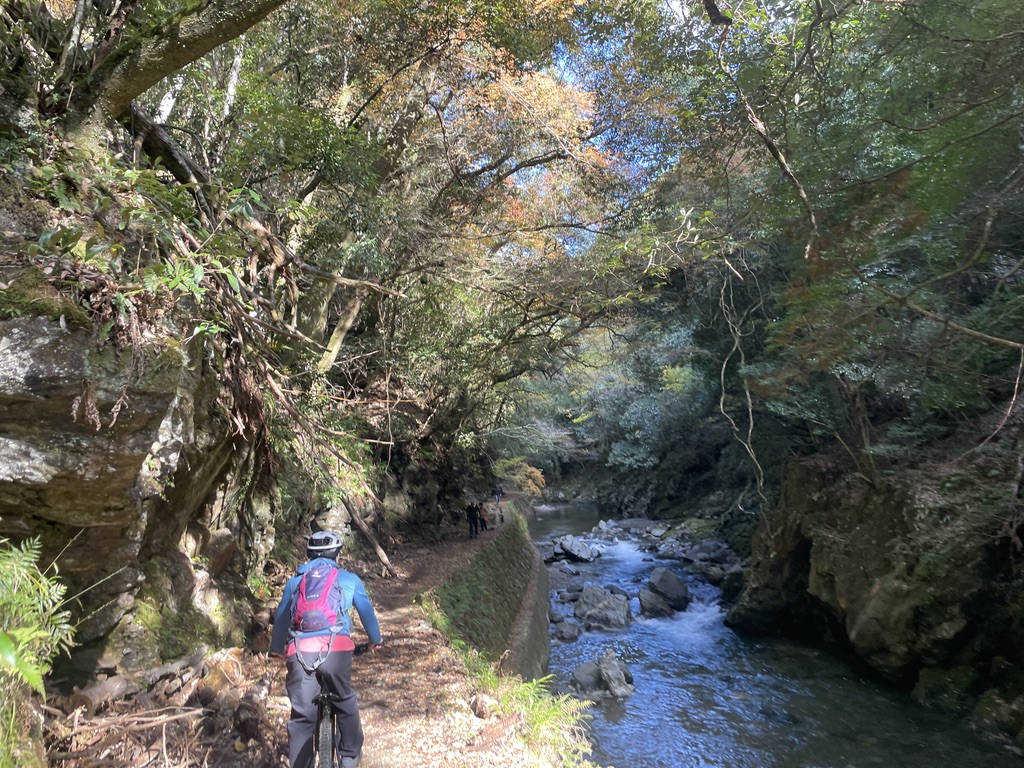
Long ago, this was the entrance to the sacred mountain called Mt. Atago, where ascetics could enjoy a beautiful mountain stream. In the first half of the 20th century, it was a leisure spot for skiing and the like, but now it is a place to enjoy hiking or cycling.
It's an hour's walk from Arashiyama, or 15 minutes by E-Bike. If you hike, you can go to Takao and take a bus back, but you'll need to carry your bike on your shoulders the whole way.
Hozukyo Gorge (Boat Tour or Cycling)
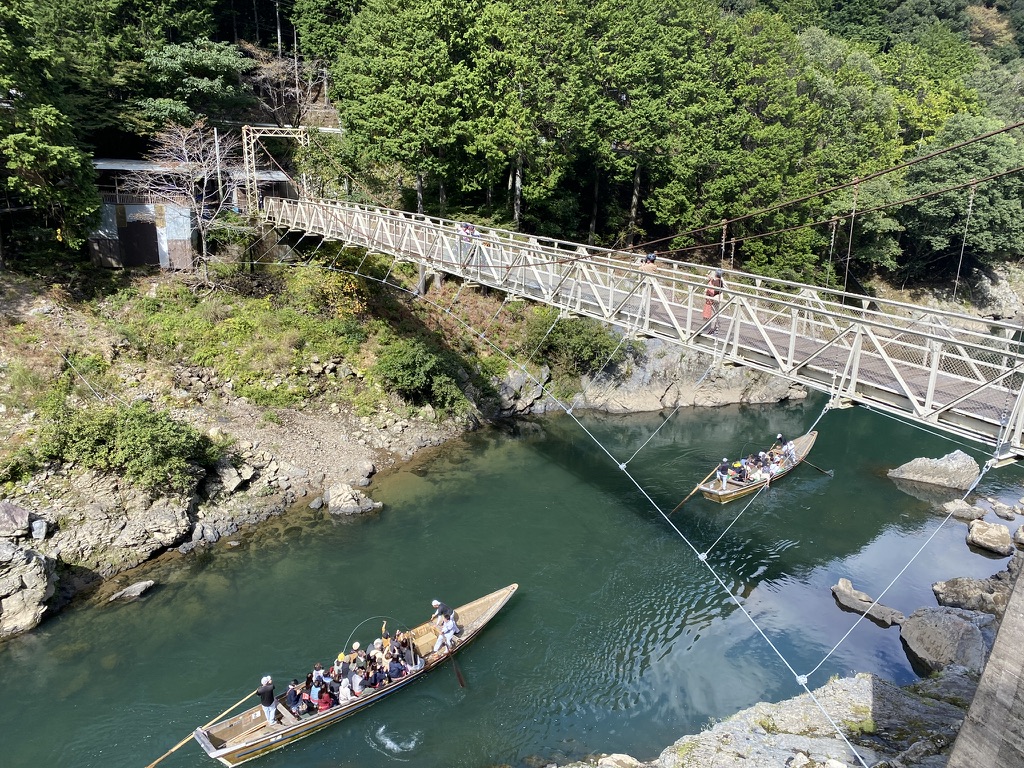
Hozukyo is a river that flows west of Kyoto and is upstream of Arashiyama. It has a magnificent and beautiful valley.
Boat tours are available from Umahori Station upstream, where you can enjoy going down the river in a wooden boat that is just like it was 300 years ago.
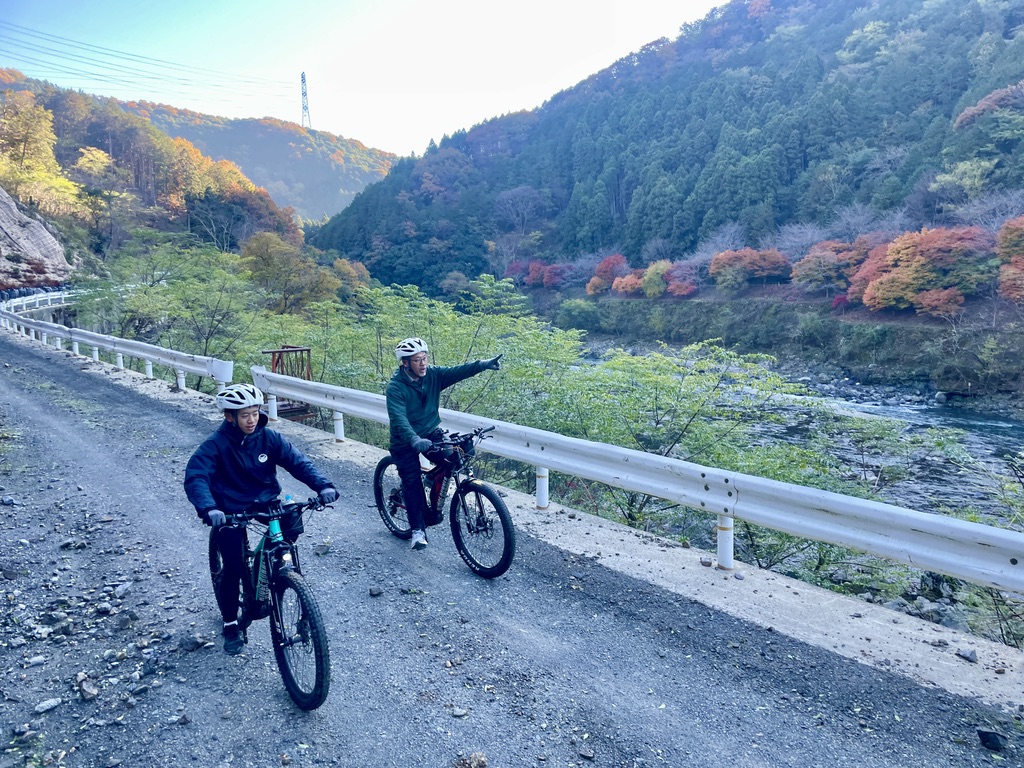
We also recommend a cycling tour where you can enjoy the beautiful forests as well as the river scenery. Since we use the latest e-mountain bikes, even beginners can enjoy it.
You can walk or cycle to Hozukyo from Arashiyama, or you can get off at JR Hozukyo Station or take the trolley train.
Kyoto E-Bike Tours Saiin (our shop)
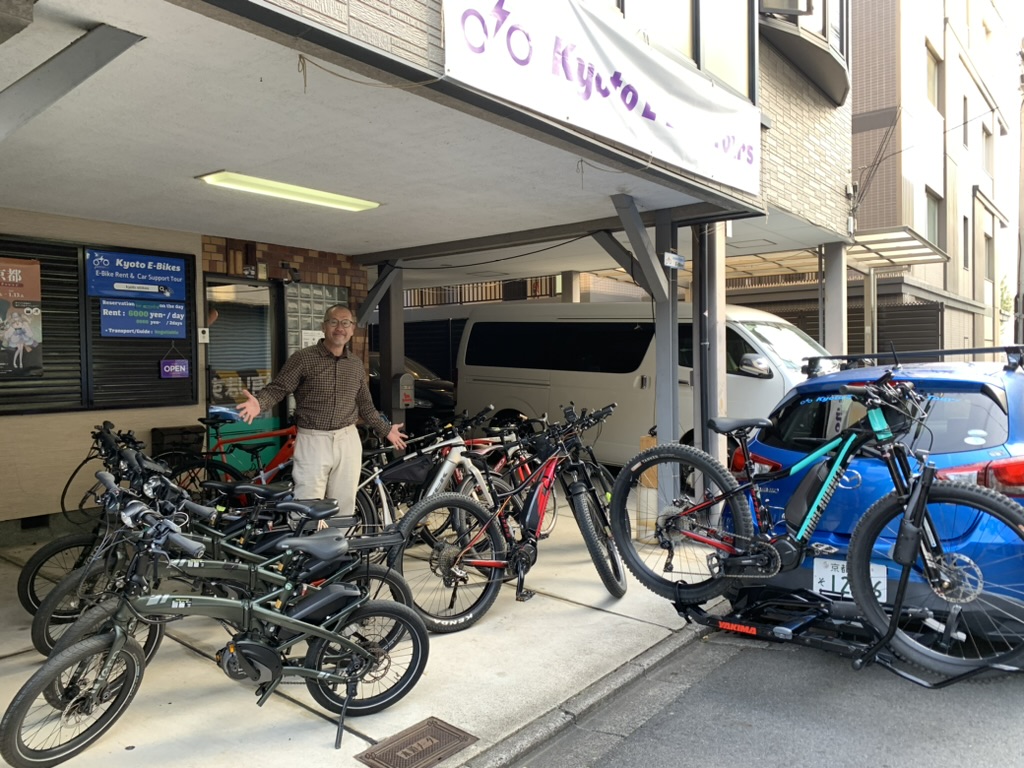
If you want to experience Kyoto at its best, or if you love cycling, be sure to stop by our store!
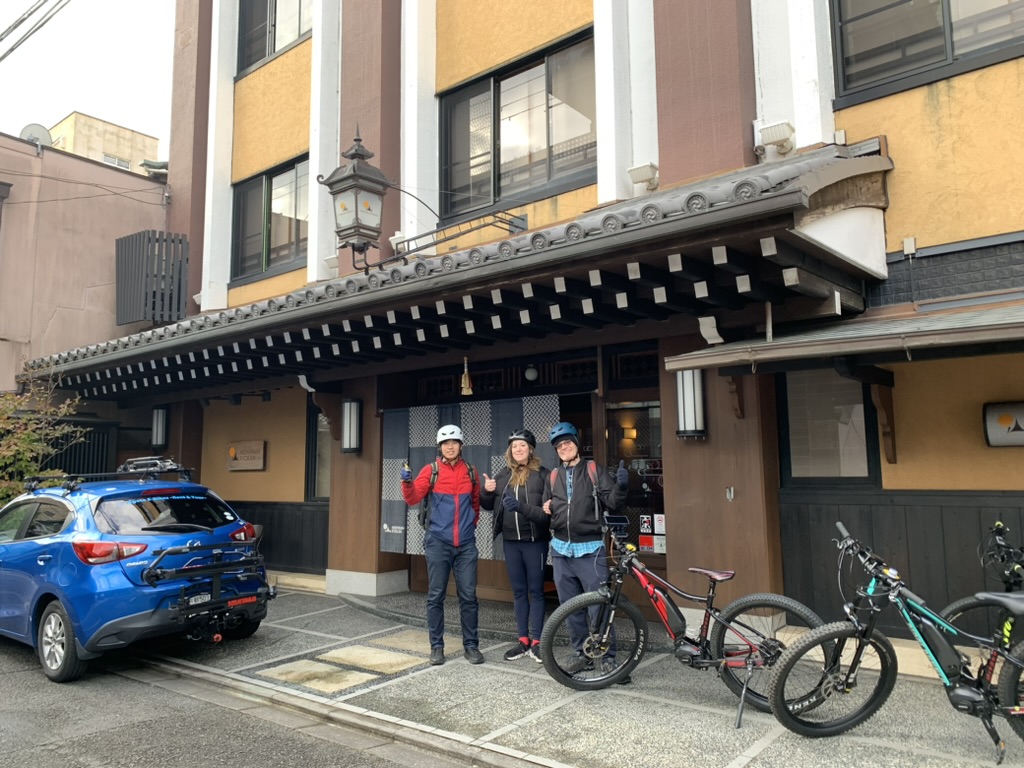
We have all kinds of e-bikes, from city types to mountain types and long-distance types, as well as support cars that can be used for pick-up and delivery, and cycling guides who know Kyoto and the Kansai area inside and out.
It is a 10-minute walk from JR Tanbaguchi Station or Saiin Station. If you sign up for a guided tour, we can provide hotel pick-up and drop-off.


